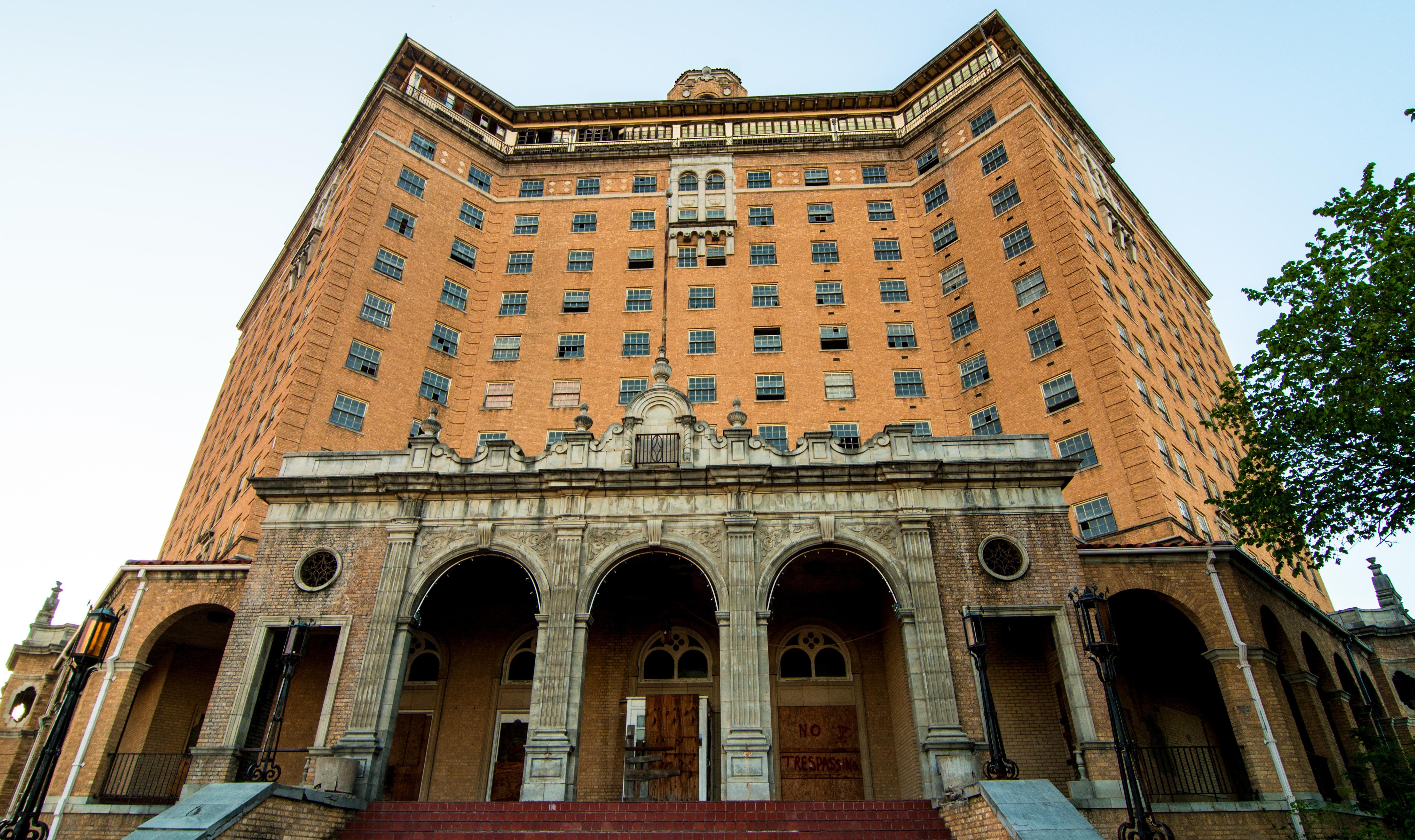24 Forgotten Ancient Ruins That Deserve More Attention
History isn’t just found in textbooks—it’s etched into stone, carved into cliffside temples, and buried beneath centuries of dust. While icons like the Great Wall of China and the Colosseum draw millions, the world is brimming with lesser-known ruins that are every bit as awe-inspiring—and far less crowded. These hidden remnants of once-great civilizations whisper stories of lost empires, sacred rituals, and timeless artistry, just waiting for curious travelers to listen. In this expanded guide, we explore 24 of the world’s most underrated ancient ruins—places that have somehow slipped under the radar but deserve a spot on every history lover’s bucket list. From jungle-covered cities to windswept mountaintop fortresses, each site offers a unique blend of mystery, beauty, and cultural significance. Join us as we travel off the beaten path to uncover the ancient wonders the world forgot—but you won’t.
1. The Enigmatic Ruins of Tikal: Echoes of the Maya Civilization
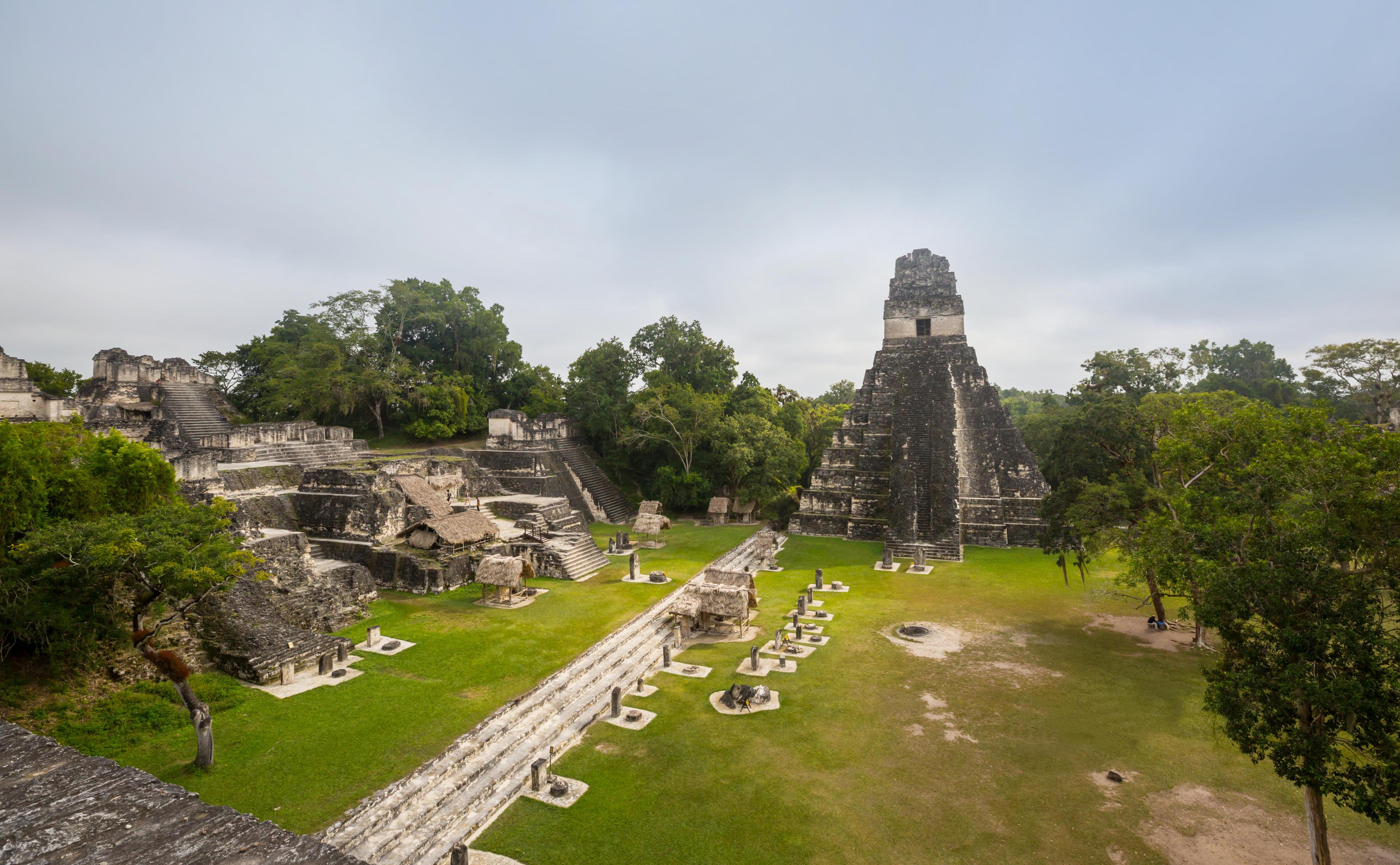
Nestled deep within the jungles of Guatemala, Tikal stands as a testament to the grandeur of the ancient Maya civilization. Unlike the more frequented sites such as Chichen Itza, Tikal offers a more intimate glimpse into the past. Its towering temples, some reaching over 200 feet high, pierce the canopy, creating a skyline that speaks of architectural prowess. The city thrived as a political and economic hub between the 6th century BCE and the 10th century CE, with its influence stretching across Mesoamerica. Intricate carvings and hieroglyphs found here provide valuable insights into the Maya's sophisticated understanding of astronomy, mathematics, and writing. As you wander through its plazas and ball courts, the echoes of a vibrant society resonate, inviting you to ponder the mysteries of their sudden decline and abandonment.
2. The Majestic Silence of Hattusa: Cradle of the Hittite Empire
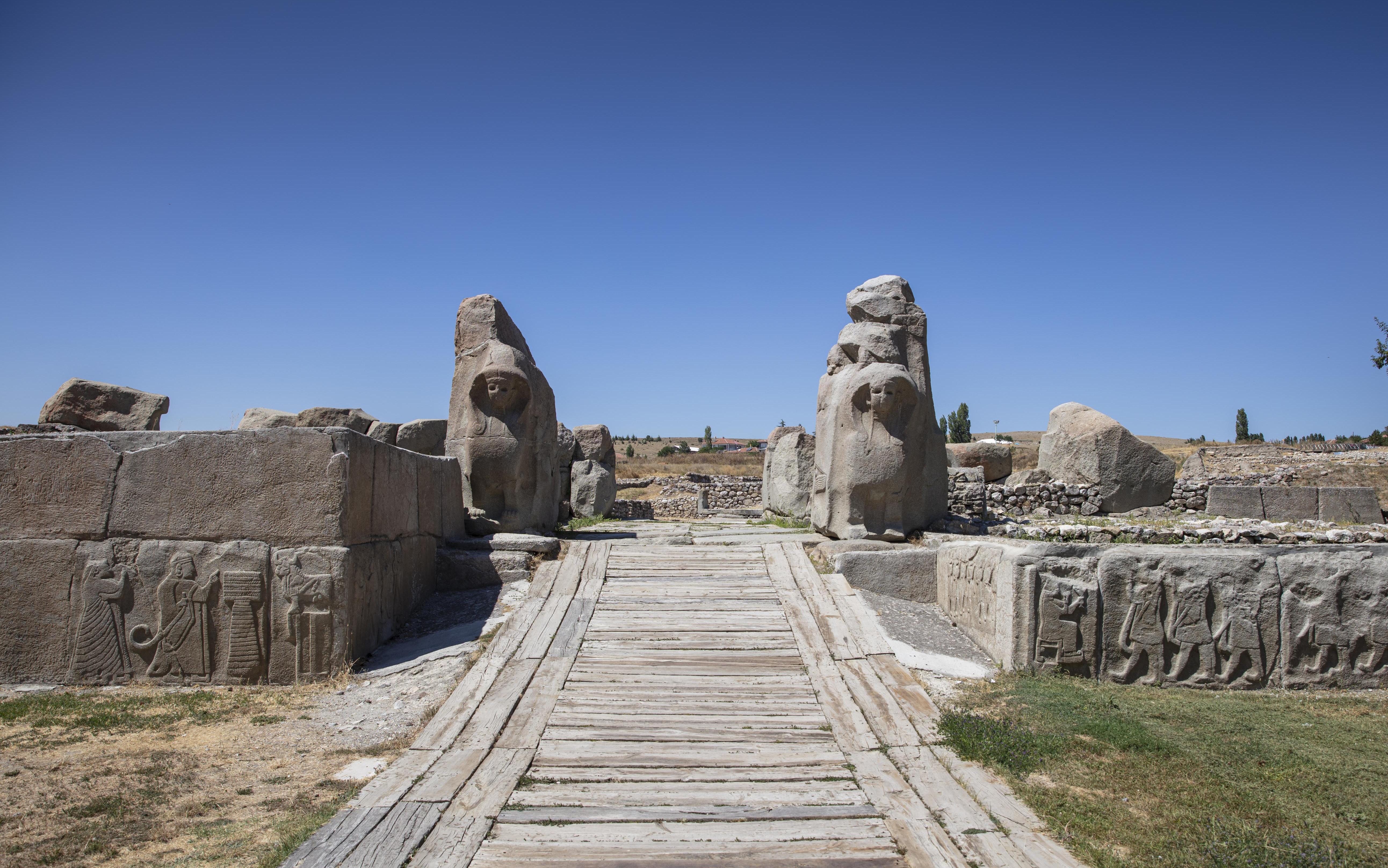
Perched atop the rugged hills of central Turkey, the ancient city of Hattusa once served as the capital of the Hittite Empire. This UNESCO World Heritage site, often overshadowed by the more famous ruins of Troy, offers a fascinating glimpse into one of the great powers of the ancient Near East. The monumental gateways, adorned with stone reliefs of lions and warriors, speak of a civilization skilled in both diplomacy and warfare. The city’s layout, with its royal citadel, temples, and residential areas, reveals a highly organized society that thrived between the 17th and 11th centuries BCE. Excavations have unearthed thousands of clay tablets, shedding light on the Hittite language and their interactions with neighboring empires. Hattusa's legacy endures in the form of its advanced legal systems and treaties, which influenced subsequent cultures in the region.
3. The Hidden Splendor of Nan Madol: Venice of the Pacific
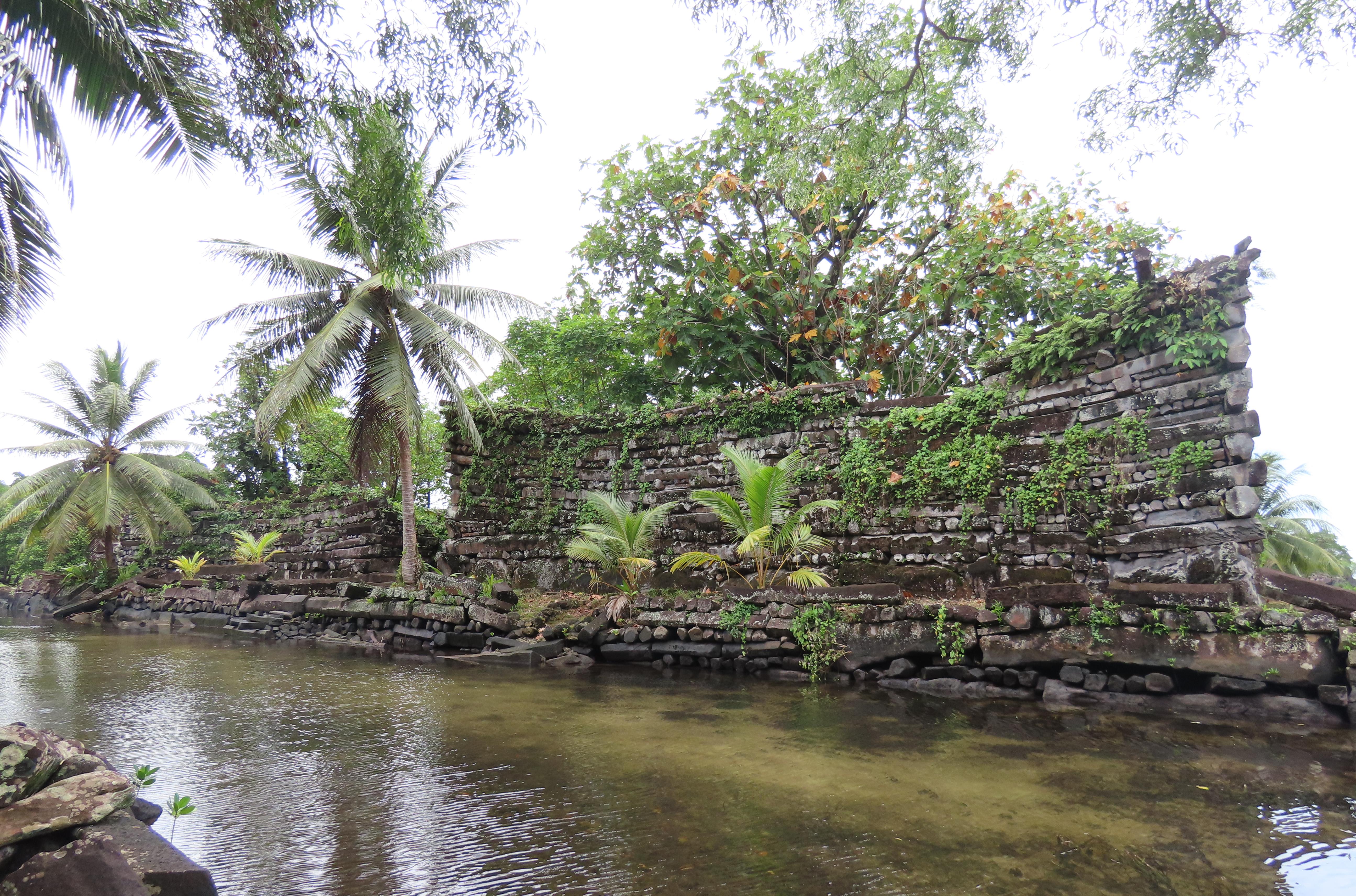
Off the eastern coast of Pohnpei in Micronesia lies Nan Madol, a mysterious complex of over 100 small artificial islets linked by a network of canals. Often referred to as the "Venice of the Pacific," this archaeological site was the ceremonial and political seat of the Saudeleur Dynasty until about 1628. Constructed from massive basalt stones, the ruins of Nan Madol are a marvel of ancient engineering, with some stones weighing up to 50 tons. The purpose and methods behind its construction remain subjects of intrigue and speculation, with theories ranging from religious rituals to astronomical alignments. Despite its significance, Nan Madol remains relatively unknown, offering a serene and untouched glimpse into the ingenuity of Pacific Island cultures. Its isolation and enigmatic history continue to captivate archaeologists and adventurers alike.
4. The Sacred Geometry of Sanchi: A Buddhist Pilgrimage
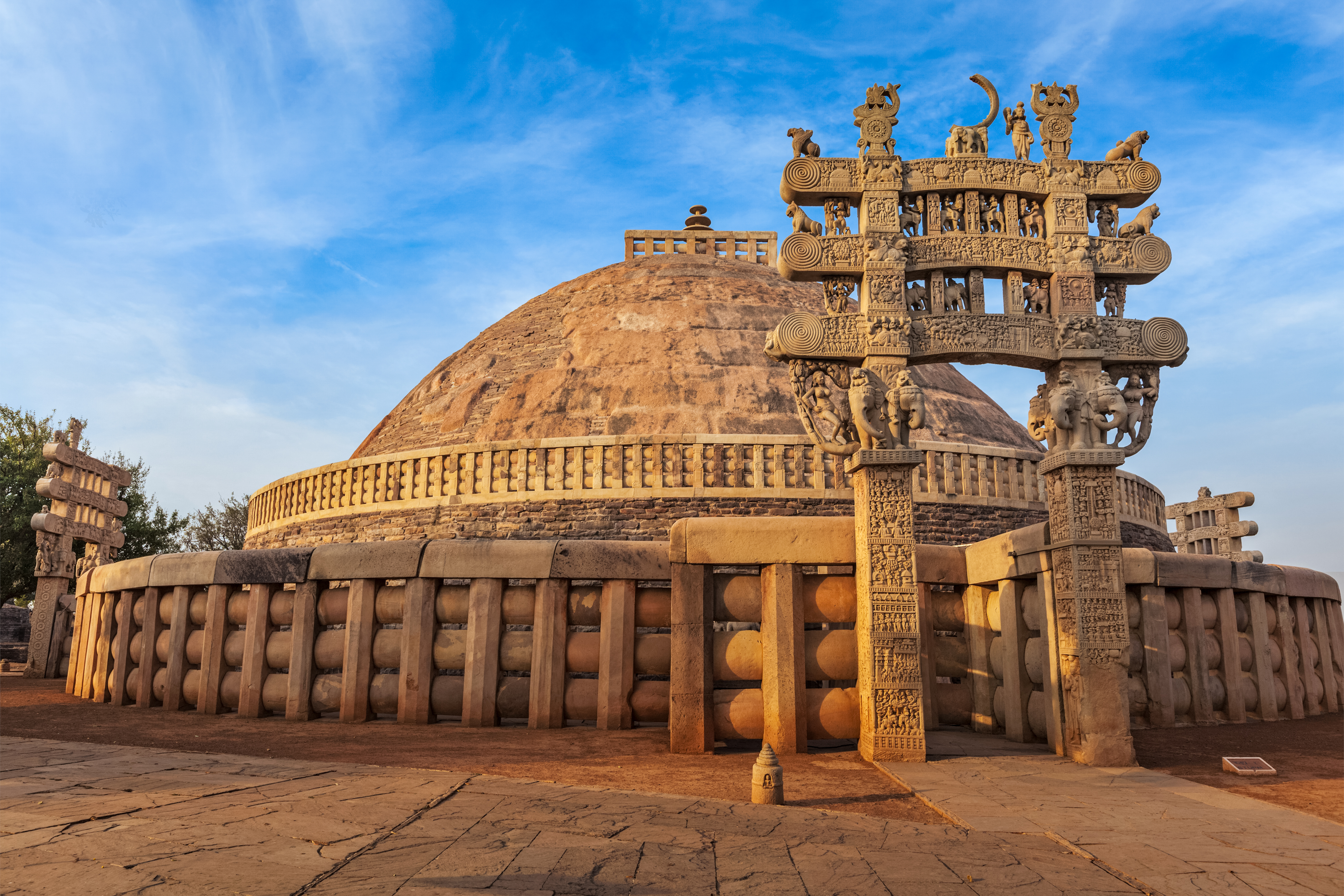
In the heart of India, the ancient Buddhist complex of Sanchi stands as a symbol of spiritual enlightenment and artistic achievement. While the more famous Ajanta and Ellora caves often capture the limelight, Sanchi's stupas, monasteries, and pillars hold their own allure. Established in the 3rd century BCE by Emperor Ashoka, Sanchi became a major center for Buddhist learning and pilgrimage. The Great Stupa, with its intricate carvings depicting scenes from the Buddha's life, exemplifies the fusion of art and spirituality. The site reflects the evolution of Indian architecture and the spread of Buddhism across Asia. As you explore its serene grounds, the silence is punctuated only by the whispers of wind through the trees, inviting contemplation and a deeper understanding of the teachings of the Buddha.
5. The Whispering Winds of Great Zimbabwe: A Kingdom in Stone
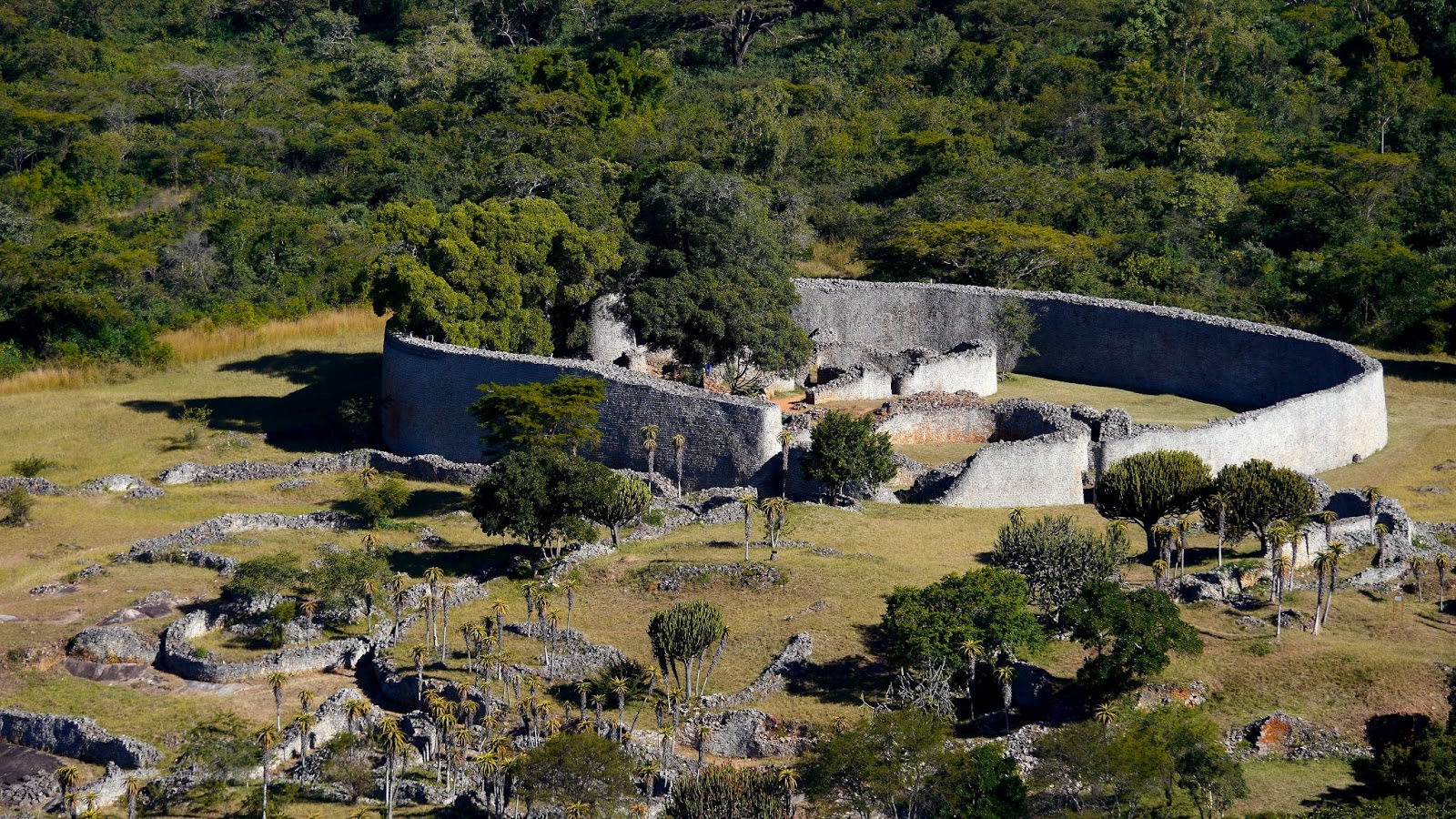
In the heart of southern Africa, the ruins of Great Zimbabwe rise majestically from the landscape, telling the story of a powerful kingdom that once dominated the region. Often overshadowed by the more famous Egyptian pyramids, this site is a testament to the architectural and cultural achievements of the Shona people. Constructed between the 11th and 15th centuries, the stone structures, including the iconic Great Enclosure and the Conical Tower, were built without mortar, showcasing advanced engineering skills. Great Zimbabwe was a thriving trade center, connecting Africa to the wider world through the exchange of gold, ivory, and other goods. Its decline remains a mystery, but the legacy of its people endures in the rich cultural traditions of modern Zimbabwe. As you walk among the ruins, the whispering winds carry tales of prosperity, innovation, and resilience.
6. The Forgotten Citadel of Ani: Crossroads of Empires
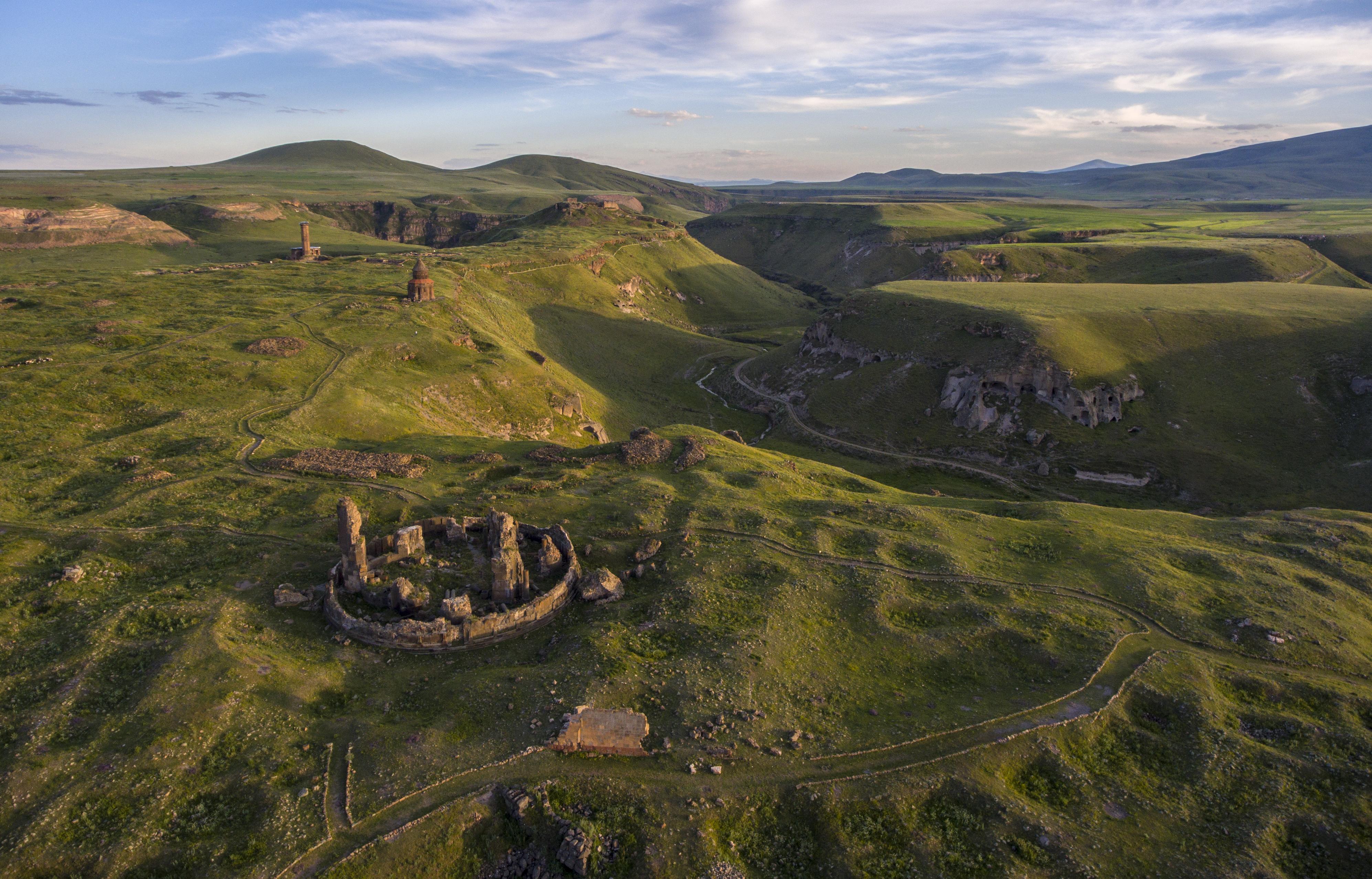
Perched on the border between Turkey and Armenia, the ancient city of Ani was once a thriving metropolis known as the "City of 1001 Churches." Its strategic location along the Silk Road made it a melting pot of cultures and religions, with influences from the Byzantine, Persian, and Arab worlds. Despite its historical significance, Ani remains relatively unknown, offering a hauntingly beautiful landscape of crumbling cathedrals, fortifications, and palaces. At its height in the 10th and 11th centuries, Ani was a center of commerce, art, and scholarship. The intricate stone carvings and frescoes found here reflect the city's diverse heritage and the artistic achievements of its people. As you explore its silent streets, the echoes of a vibrant past linger, inviting reflection on the forces that shaped its rise and fall.
7. The Timeless Majesty of Persepolis: Jewel of the Persian Empire
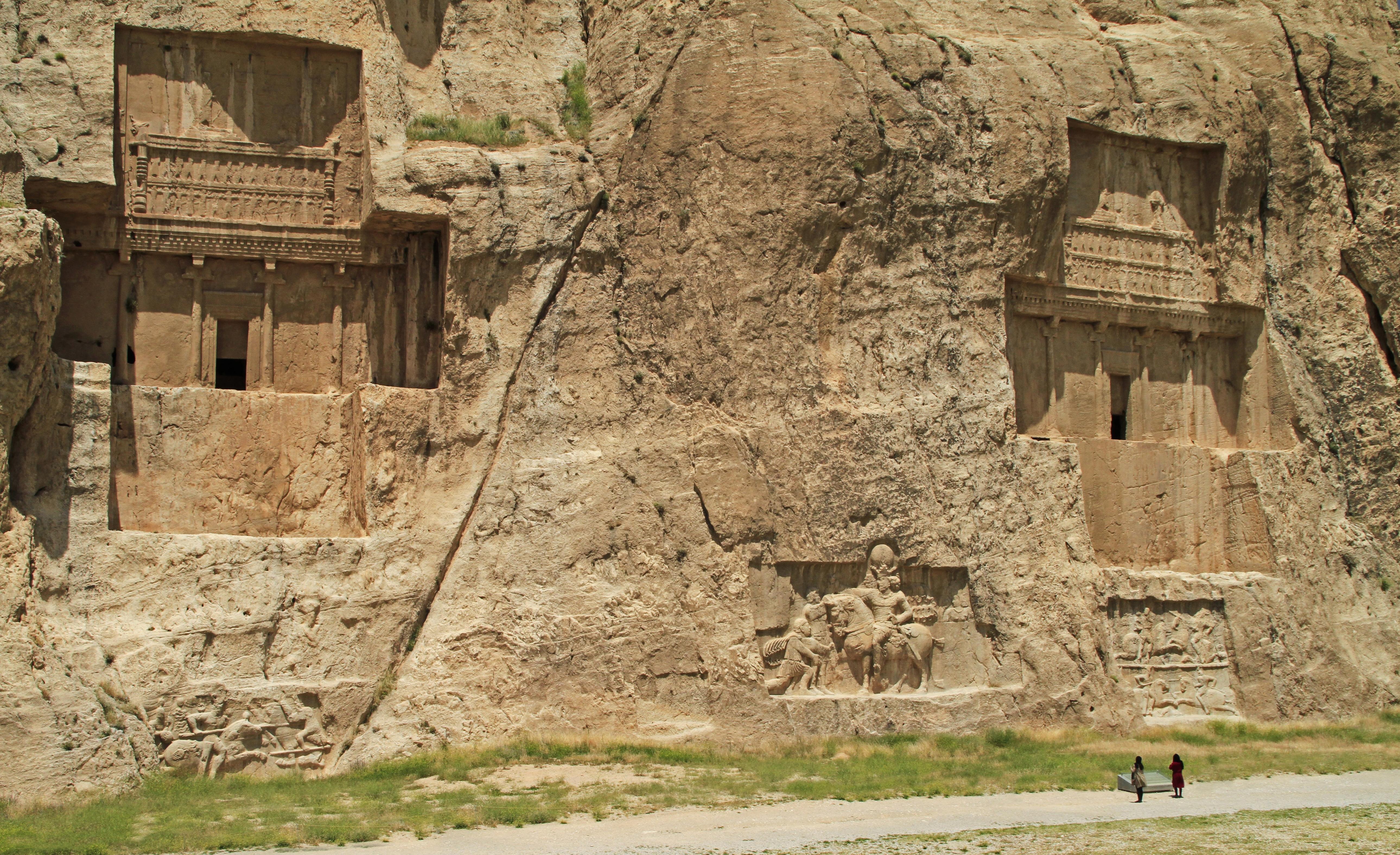
In the arid plains of southern Iran, the ruins of Persepolis stand as a testament to the grandeur of the Achaemenid Empire. Founded by Darius the Great in the 6th century BCE, this ceremonial capital was a hub of political, cultural, and economic activity. While the more famous ruins of Babylon often overshadow it, Persepolis offers a unique glimpse into the opulence and power of ancient Persia. The grand staircases, towering columns, and intricate bas-reliefs depict scenes of tribute and diplomacy, showcasing the empire's vast reach and influence. Despite its destruction by Alexander the Great in 330 BCE, the ruins of Persepolis continue to inspire awe and admiration. As you wander through its halls, the echoes of past glories resonate, inviting contemplation on the legacy of one of history's greatest empires.
8. The Lost World of Tiwanaku: Gateway to the Andes
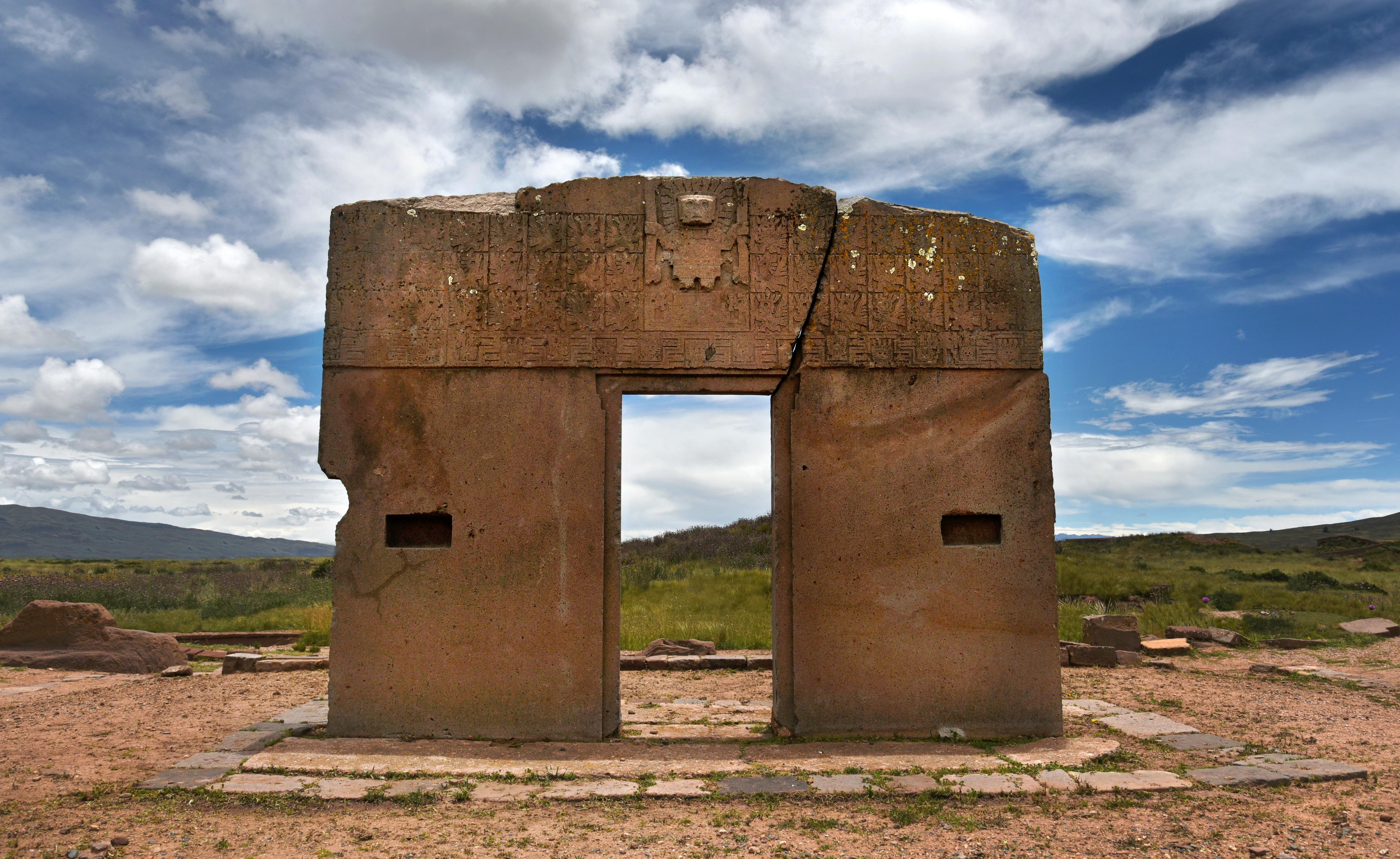
High in the Andean plateau of Bolivia lies Tiwanaku, an ancient city that once served as the center of a powerful pre-Columbian civilization. Often overshadowed by the more famous Inca ruins of Machu Picchu, Tiwanaku offers a fascinating glimpse into the achievements of a culture that thrived between 300 and 1000 CE. The site's monumental stone structures, including the iconic Gateway of the Sun, reflect advanced engineering and astronomical knowledge. Tiwanaku was a hub of trade and cultural exchange, connecting the Andean region with the wider world. Its decline remains a mystery, but the legacy of its people endures in the rich cultural traditions of modern Bolivia. As you explore its ruins, the echoes of a vibrant past invite reflection on the forces that shaped its rise and fall.
9. The Mysterious Megaliths of Carnac: A Prehistoric Puzzle
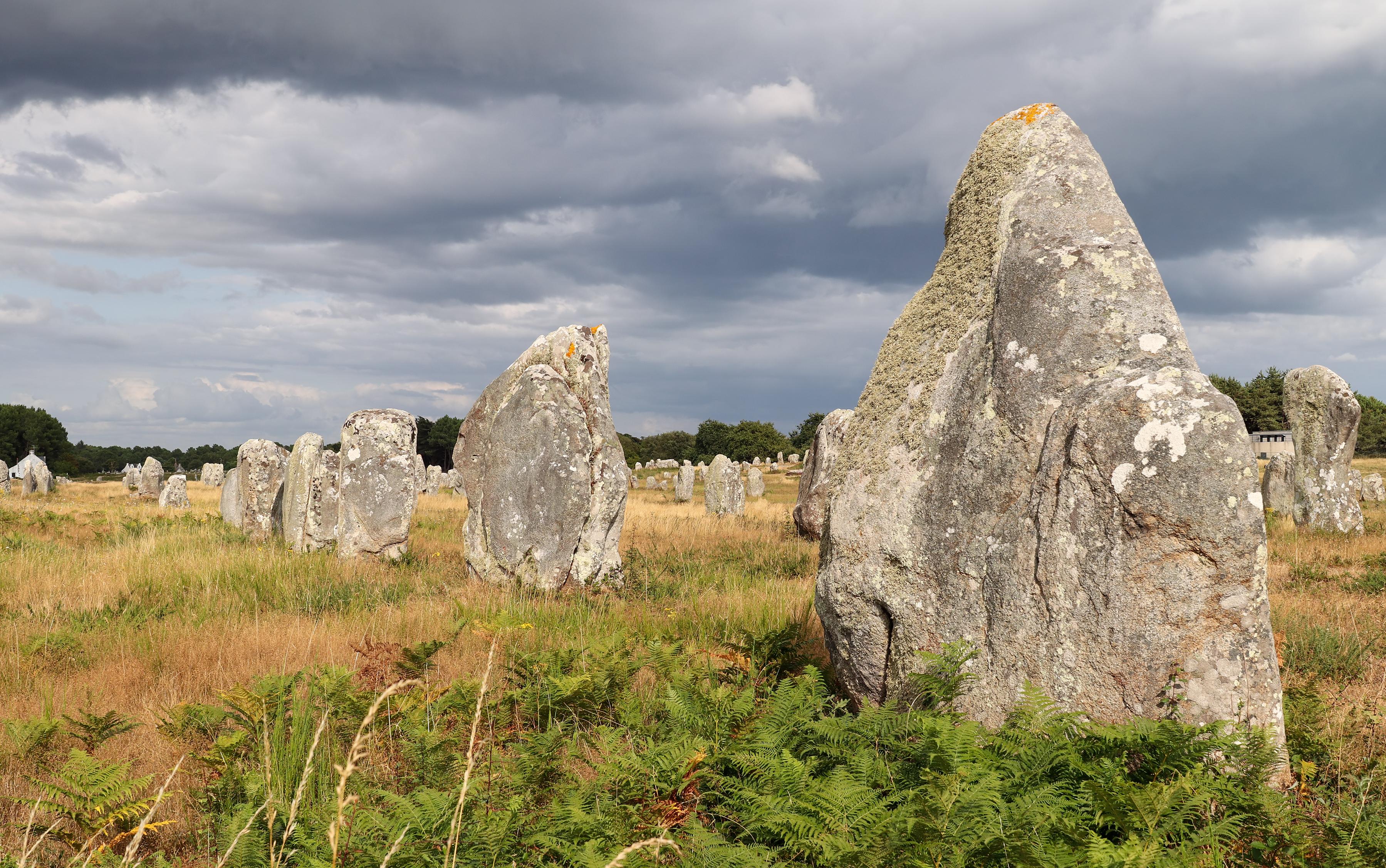
In the rolling hills of Brittany, France, the megalithic alignments of Carnac stand as a testament to the ingenuity of prehistoric peoples. While the more famous Stonehenge often captures the limelight, Carnac's thousands of standing stones offer a unique glimpse into the rituals and beliefs of Neolithic societies. Erected between 4500 and 3300 BCE, these stones are arranged in rows, circles, and dolmens, creating a landscape that has puzzled archaeologists for centuries. The purpose and meaning of these alignments remain subjects of speculation, with theories ranging from astronomical observatories to religious sites. Despite their mystery, the stones of Carnac continue to captivate visitors, inviting contemplation on the origins of human civilization and the enduring legacy of our ancestors.
10. The Silent Sentinels of Petra: A City Carved in Stone
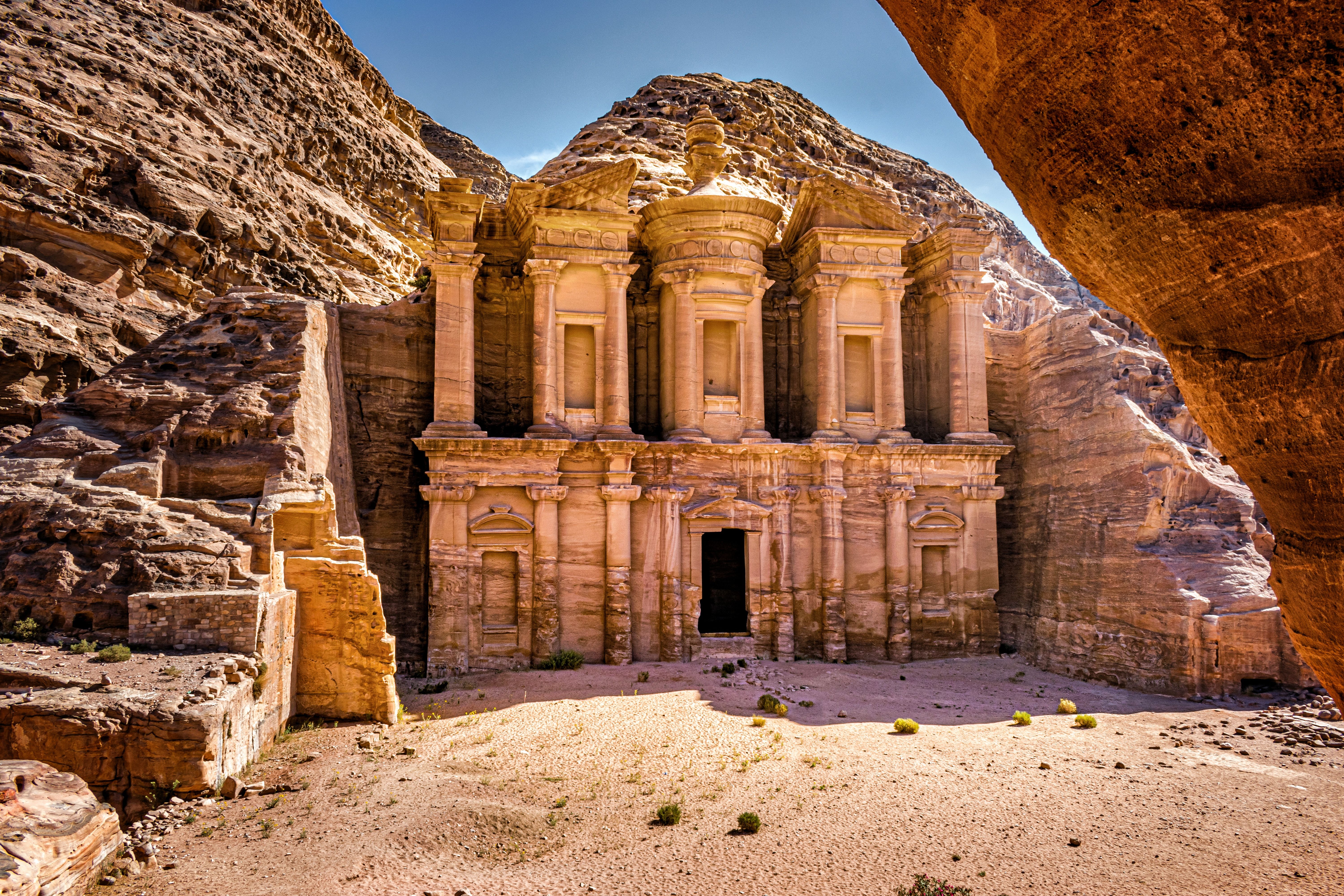
Hidden within the rugged mountains of southern Jordan lies Petra, an ancient city carved into the rose-red cliffs. Often overshadowed by the more famous ruins of Rome, Petra offers a unique glimpse into the achievements of the Nabataean civilization. Established as a major trading hub between the 4th century BCE and the 2nd century CE, Petra's monumental tombs, temples, and theaters reflect advanced engineering and artistic skills. The city's strategic location along the trade routes connecting Arabia, Egypt, and the Mediterranean made it a center of commerce and cultural exchange. Despite its decline, Petra remains a symbol of human ingenuity and resilience, its silent sentinels inviting reflection on the forces that shaped its rise and fall.
11. The Sacred Silence of Göbekli Tepe: Dawn of Civilization
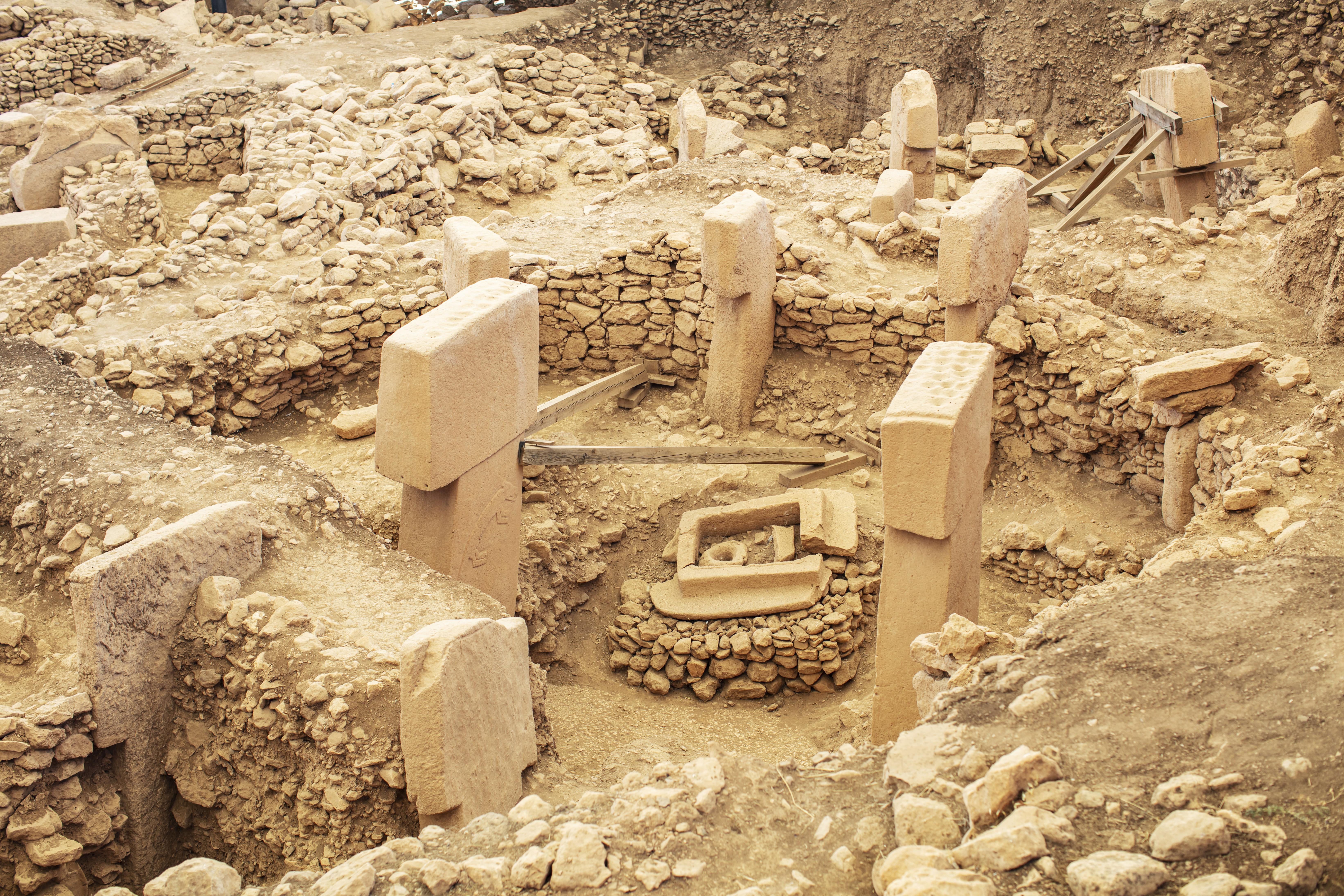
In the arid plains of southeastern Turkey, Göbekli Tepe stands as a testament to the ingenuity of prehistoric peoples. Often overshadowed by the more famous ruins of Mesopotamia, this archaeological site offers a unique glimpse into the origins of human civilization. Dating back to the 10th millennium BCE, Göbekli Tepe is considered one of the oldest known temples in the world. Its massive stone pillars, arranged in circular enclosures, are adorned with intricate carvings of animals and abstract symbols. The purpose and meaning of these structures remain subjects of speculation, with theories ranging from religious rituals to astronomical observatories. Despite its mystery, Göbekli Tepe continues to captivate archaeologists and historians, inviting reflection on the origins of human culture and the enduring legacy of our ancestors.
12. The Echoes of Ephesus: A Roman Metropolis
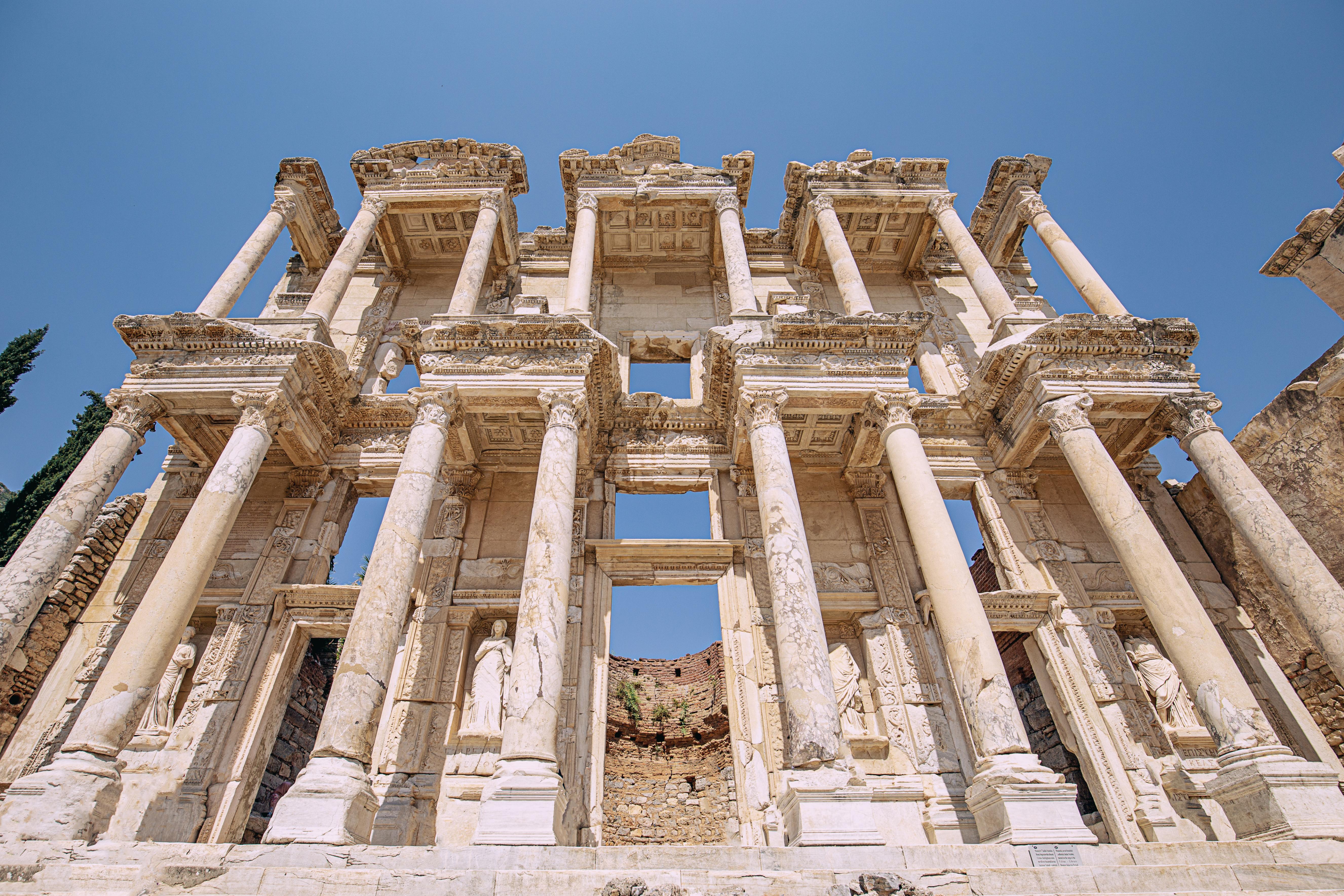
Nestled on the western coast of Turkey, the ancient city of Ephesus was once a thriving metropolis of the Roman Empire. While the more famous ruins of Pompeii often capture the limelight, Ephesus offers a unique glimpse into the daily life and culture of ancient Rome. Established as a major center of commerce and culture in the 1st century BCE, Ephesus was home to the Temple of Artemis, one of the Seven Wonders of the Ancient World. The city's well-preserved streets, theaters, and libraries reflect the architectural and artistic achievements of its people. Despite its decline, Ephesus remains a symbol of human ingenuity and resilience, its echoes inviting reflection on the forces that shaped its rise and fall.
13. The Timeless Allure of Angkor Wat: A Khmer Masterpiece
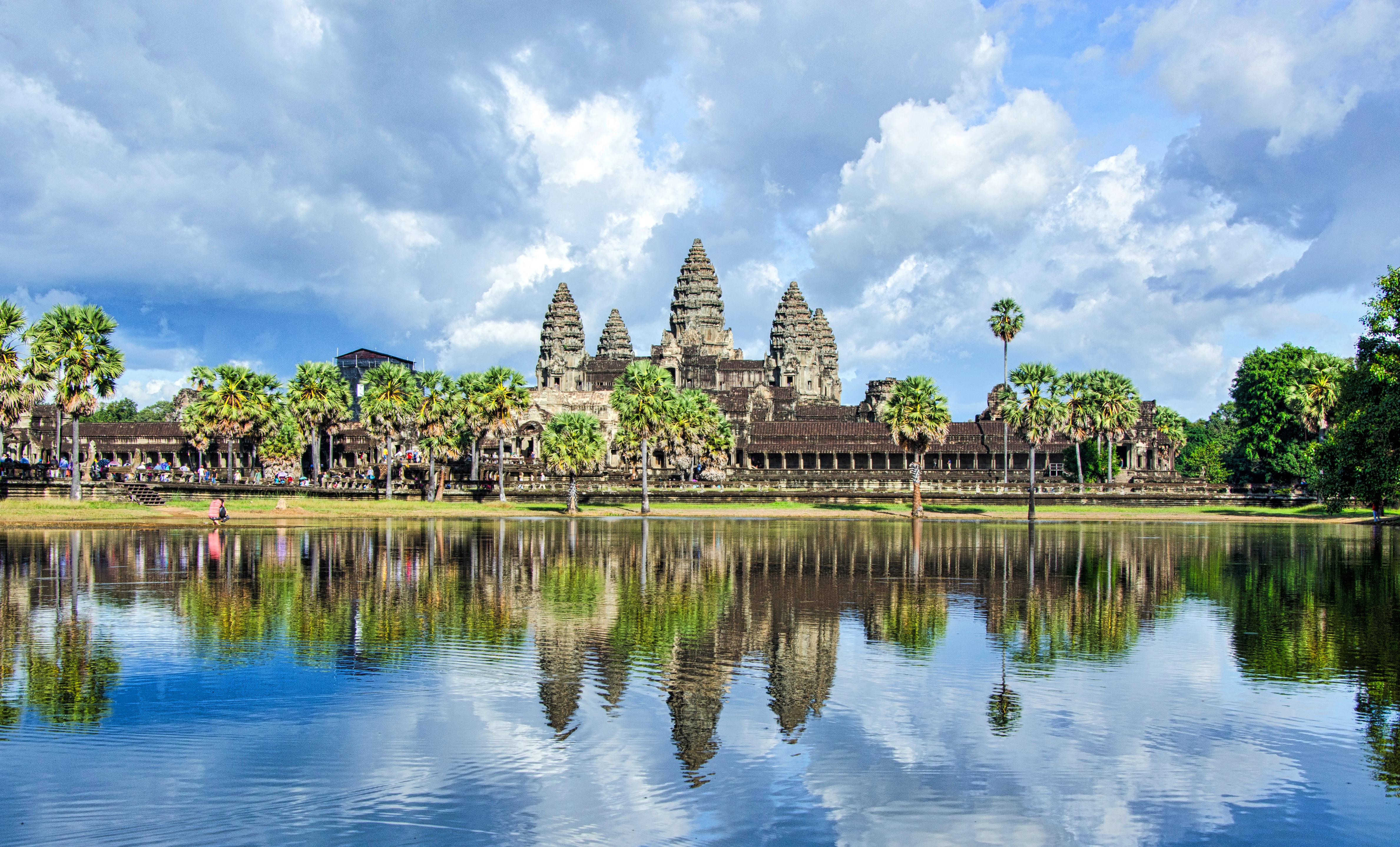
In the heart of Cambodia, the ancient temple complex of Angkor Wat stands as a testament to the grandeur of the Khmer Empire. While the more famous ruins of the Great Wall of China often overshadow it, Angkor Wat offers a unique glimpse into the achievements of a civilization that thrived between the 9th and 15th centuries. The temple's intricate bas-reliefs and towering spires reflect advanced engineering and artistic skills, showcasing the Khmer's sophisticated understanding of religion, astronomy, and architecture. Despite its decline, Angkor Wat remains a symbol of human ingenuity and resilience, its timeless allure inviting reflection on the forces that shaped its rise and fall.
14. The Ancient Echoes of Chichen Itza: A Maya Marvel
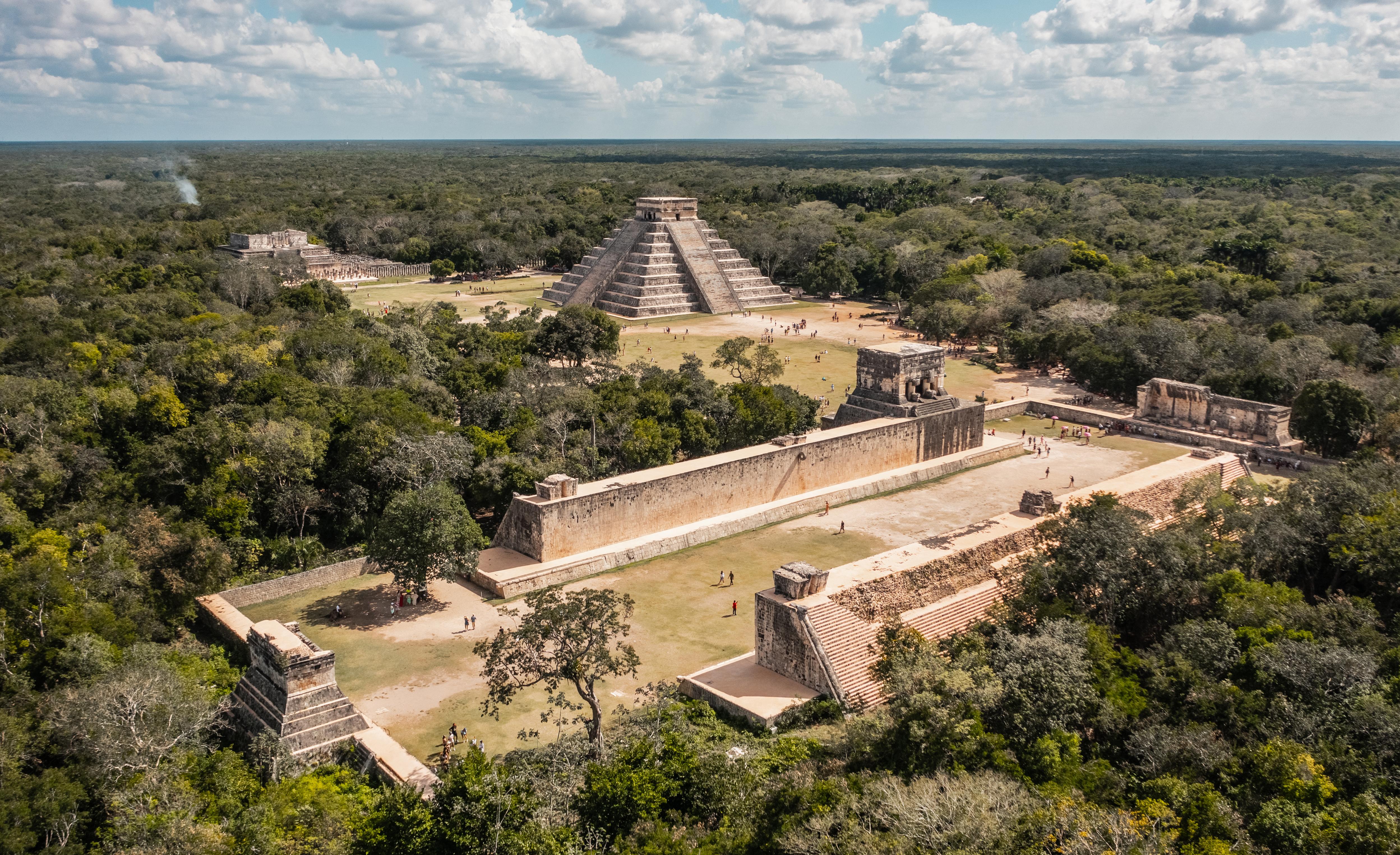
In the heart of the Yucatán Peninsula, the ancient city of Chichen Itza stands as a testament to the grandeur of the Maya civilization. While the more famous ruins of Machu Picchu often capture the limelight, Chichen Itza offers a unique glimpse into the achievements of a culture that thrived between the 7th and 10th centuries. The city's monumental pyramids, temples, and ball courts reflect advanced engineering and astronomical knowledge, showcasing the Maya's sophisticated understanding of mathematics, science, and religion. Despite its decline, Chichen Itza remains a symbol of human ingenuity and resilience, its ancient echoes inviting reflection on the forces that shaped its rise and fall.
15. Tulum, Mexico: A Seaside Stronghold of the Maya
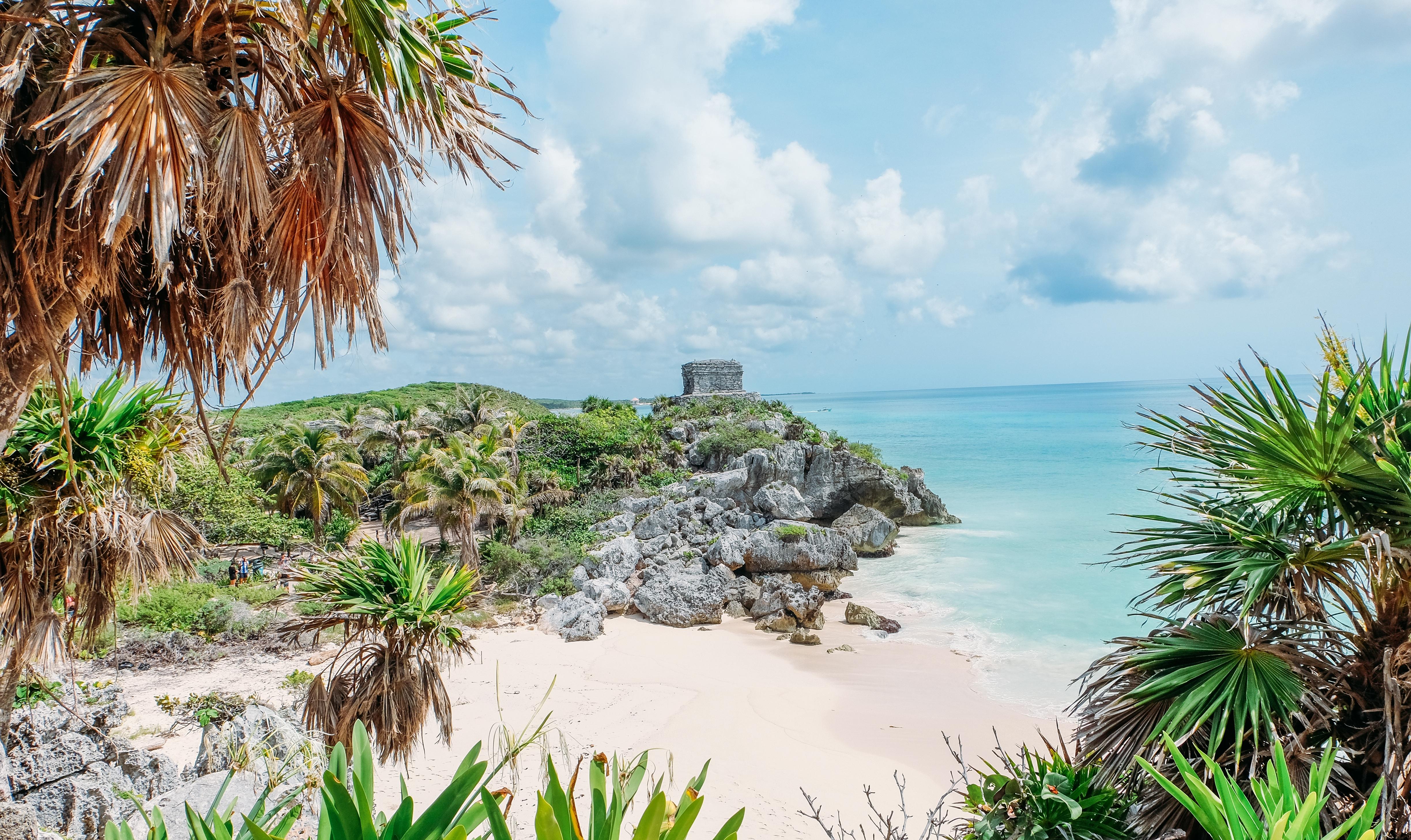
Perched atop limestone cliffs that plunge dramatically into the turquoise waters of the Caribbean, Tulum is one of the most visually striking ancient ruins in the Americas. Unlike the sprawling jungle-bound metropolises of inland Maya civilization, Tulum’s setting is unmistakably coastal—built to command sea routes and gaze out over trade ships gliding along the Mesoamerican reef. Flourishing between the 13th and 15th centuries, Tulum was a major port, connecting maritime trade routes with inland cities like Coba. The site’s architecture reflects both functionality and spiritual depth. The Castillo, perched on the cliff’s edge, likely served as a lighthouse and ceremonial temple, guiding traders by both day and starlight. The Temple of the Frescoes holds remnants of vibrant murals depicting Maya gods and cosmology, showcasing the city’s dual role as both commercial hub and sacred site. Today, visitors can walk along the fortified walls, wander among temple ruins, and descend to the beach below for a rare chance to swim beneath a living piece of Maya history.
16. Takht-e Soleyman, Iran: The Throne of Solomon
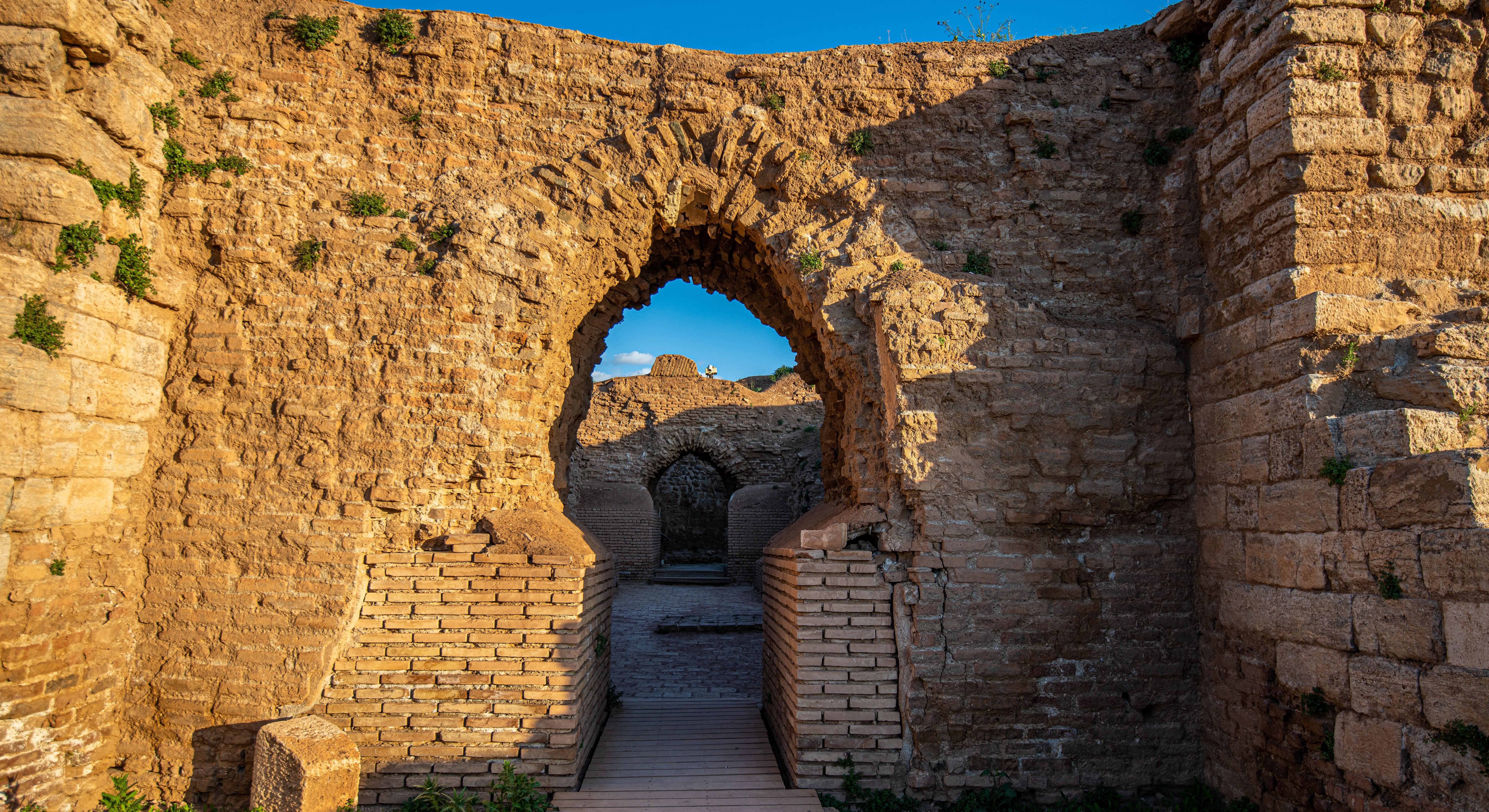
High in the volcanic highlands of northwest Iran lies Takht-e Soleyman, a mystical blend of natural wonder and ancient sanctity. Revered in Zoroastrian tradition and later by Islamic and Sassanid rulers, the site’s name—“Throne of Solomon”—reflects its mythic stature. At its center lies a deep, crystal-clear spring-fed lake, thought to possess healing powers and sacred energy. Around it once stood fire temples where eternal flames burned, echoing the core beliefs of Zoroastrianism. Built during the Sassanid period (224–651 CE), the complex featured royal residences, temples, and intricate defensive walls, some of which still stand today. The setting is otherworldly: snowcapped peaks ring the valley, volcanic basalt frames the ruins, and silence dominates the air, save for the bubbling spring. Many believe this was the birthplace of the prophet Zoroaster, adding layers of spiritual gravity. Remote and often overlooked, Takht-e Soleyman is a pilgrimage into Iran’s ancient soul—where myth, nature, and architecture converge.
17. L’Anse aux Meadows, Canada: The Viking Footprint in North America
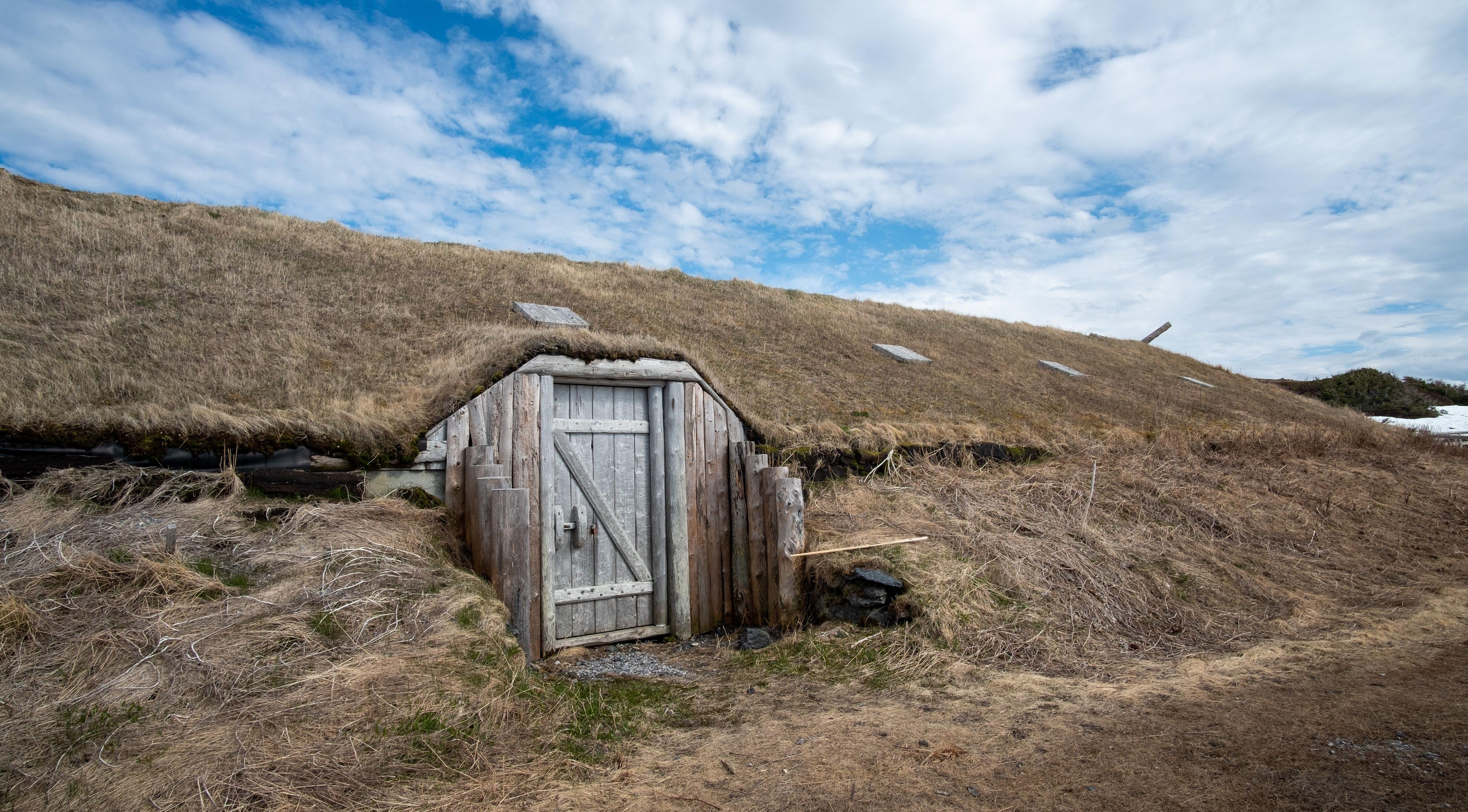
On the windswept shores of Newfoundland’s northern tip lies a site that rewrites the history of transatlantic exploration. L’Anse aux Meadows is the only confirmed Viking settlement in North America, dating to around 1000 CE—nearly 500 years before Columbus. Here, Norse explorers from Greenland and Iceland established a seasonal camp, complete with sod-walled longhouses, ironworking areas, and boat repair stations. Discovered in the 1960s, the site gave physical proof to the Norse sagas that spoke of a mysterious land called “Vinland.” Today, visitors can walk through reconstructions of Viking structures, view original excavation sites, and gain insight into the lives of the seafaring Norse who dared to cross the Atlantic in open boats. Surrounded by moorlands and icy waters, L’Anse aux Meadows is both stark and stunning—a place that whispers of bold journeys and vanished ambitions, offering a rare window into early global contact long before European empires redrew the world.
18. Thula, Yemen: A Pre-Islamic Time Capsule
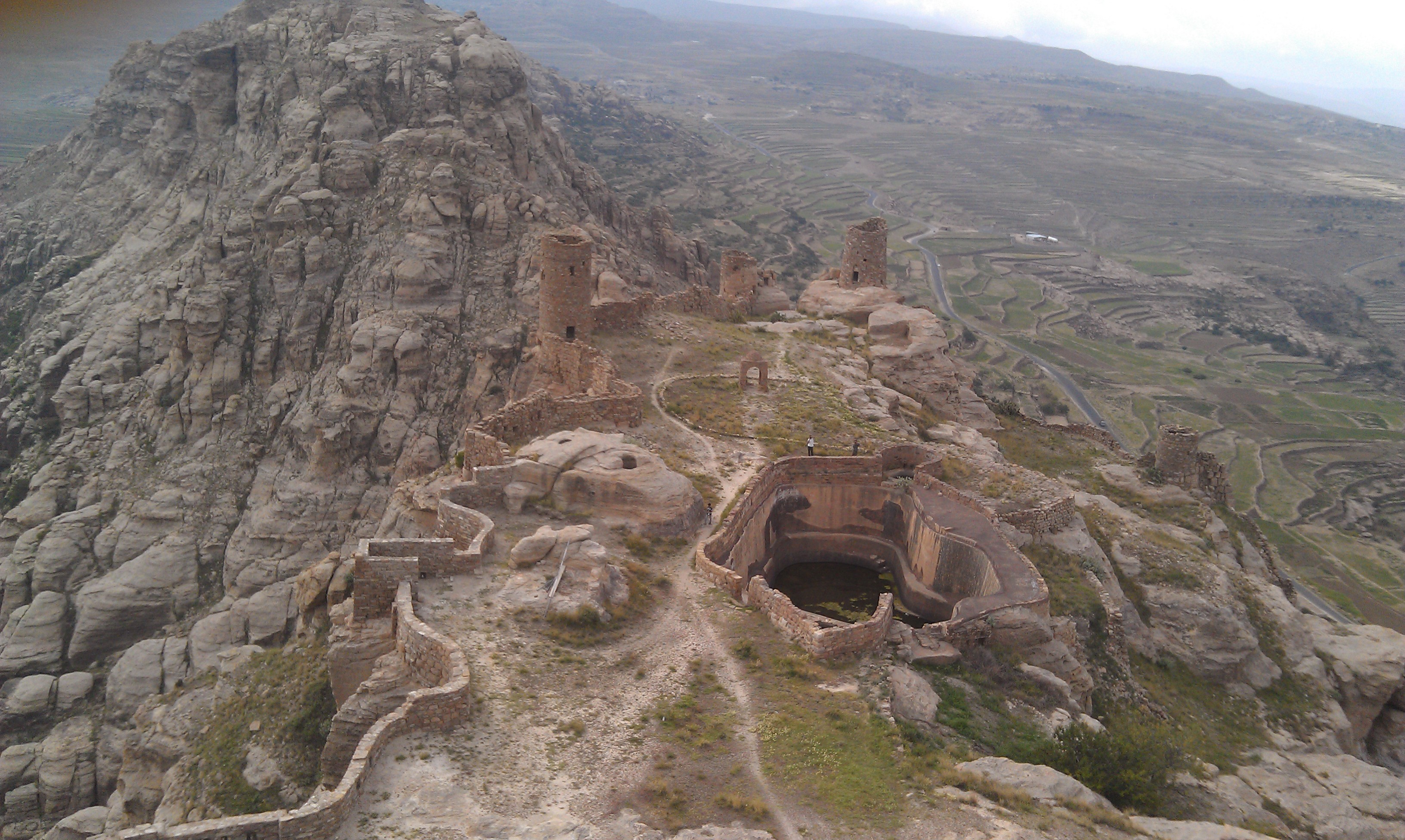
Hidden in the highlands north of Sana’a, Thula is one of Yemen’s best-preserved ancient towns—a stone-carved citadel that feels frozen in time. With roots tracing back to the Himyarite Kingdom (110 BCE – 525 CE), this fortified settlement reveals a rare continuity of pre-Islamic urban planning, architecture, and water engineering. Narrow alleyways wind between towering stone homes, many of which are still inhabited, and ancient rainwater cisterns continue to serve local needs. Thula’s most iconic features include its multi-story stone towers, crenelated walls, and beautifully preserved city gates, offering an immersive experience into Yemen’s architectural legacy. Its strategic hilltop location offers sweeping views of terraced farmland and desert plains, reminding visitors of the ingenuity required to thrive in such terrain. Though access has been limited in recent years due to political instability, Thula remains a cultural treasure—a resilient city where ancient and modern coexist in harmony, awaiting the return of travelers.
19. Sigiriya, Sri Lanka: The Lion Rock Fortress
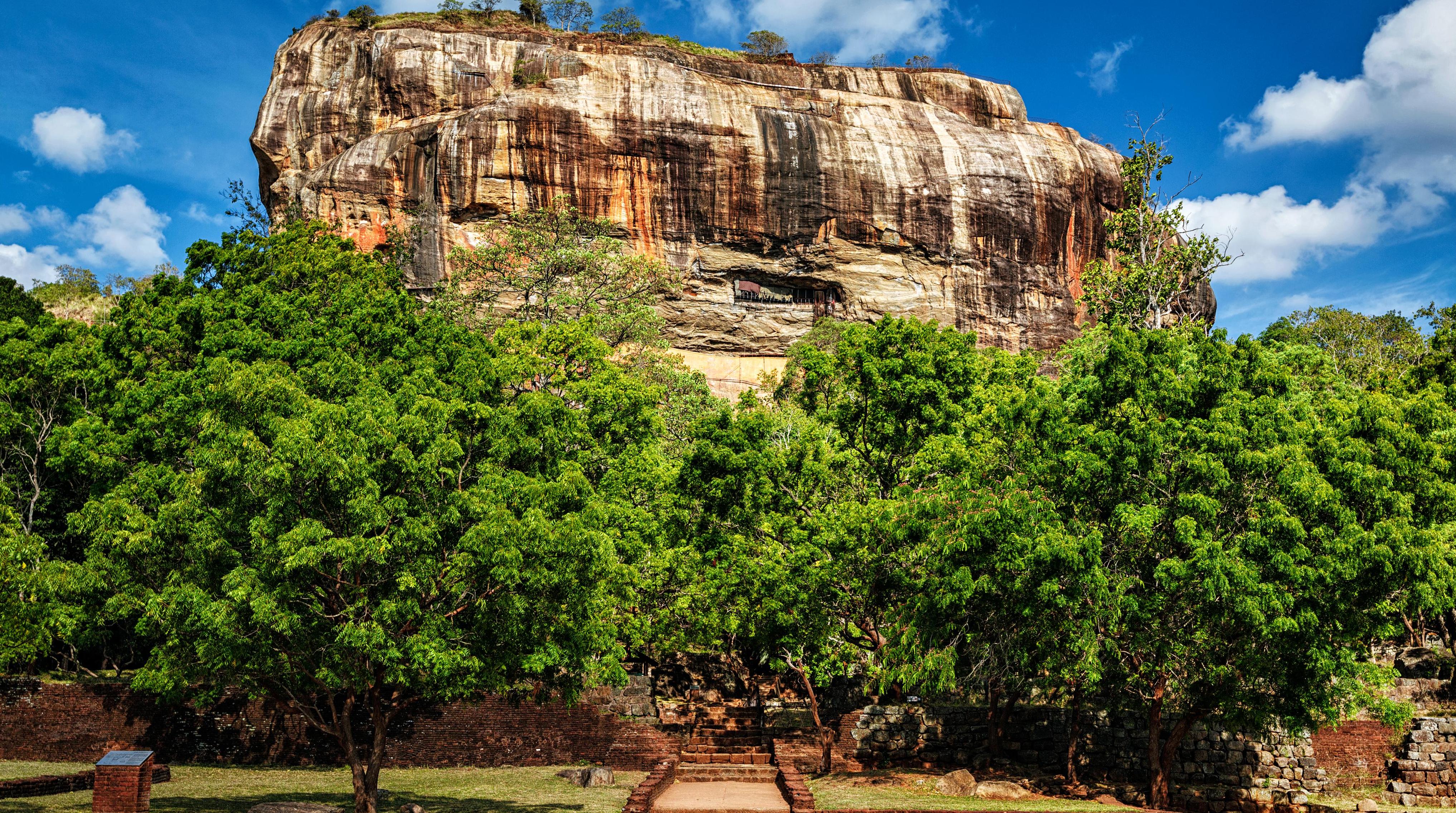
Rising abruptly from Sri Lanka’s central plains, Sigiriya is a jaw-dropping fusion of geology and human ambition. Also known as Lion Rock, this UNESCO World Heritage Site was transformed in the 5th century CE into a royal citadel by King Kashyapa. Atop its 660-foot rock summit, he built a palace complete with royal chambers, reflective pools, and panoramic views of the lush forests below. The journey to the top is an adventure in itself, involving winding staircases, narrow ledges, and ancient frescoes of celestial maidens known as the “Sigiriya Damsels.” Midway up, visitors pass through the iconic Lion Gate—two massive stone paws that once formed part of a sculpted lion’s body. At the base of the rock lies a symmetrical garden complex, considered one of the oldest landscaped gardens in the world, with hydraulic systems still functional today. Sigiriya is more than an archaeological site—it’s a testament to royal audacity, artistic vision, and engineering brilliance etched into the sky.
20. Apollonia, Albania: Greece’s Forgotten Coastal City
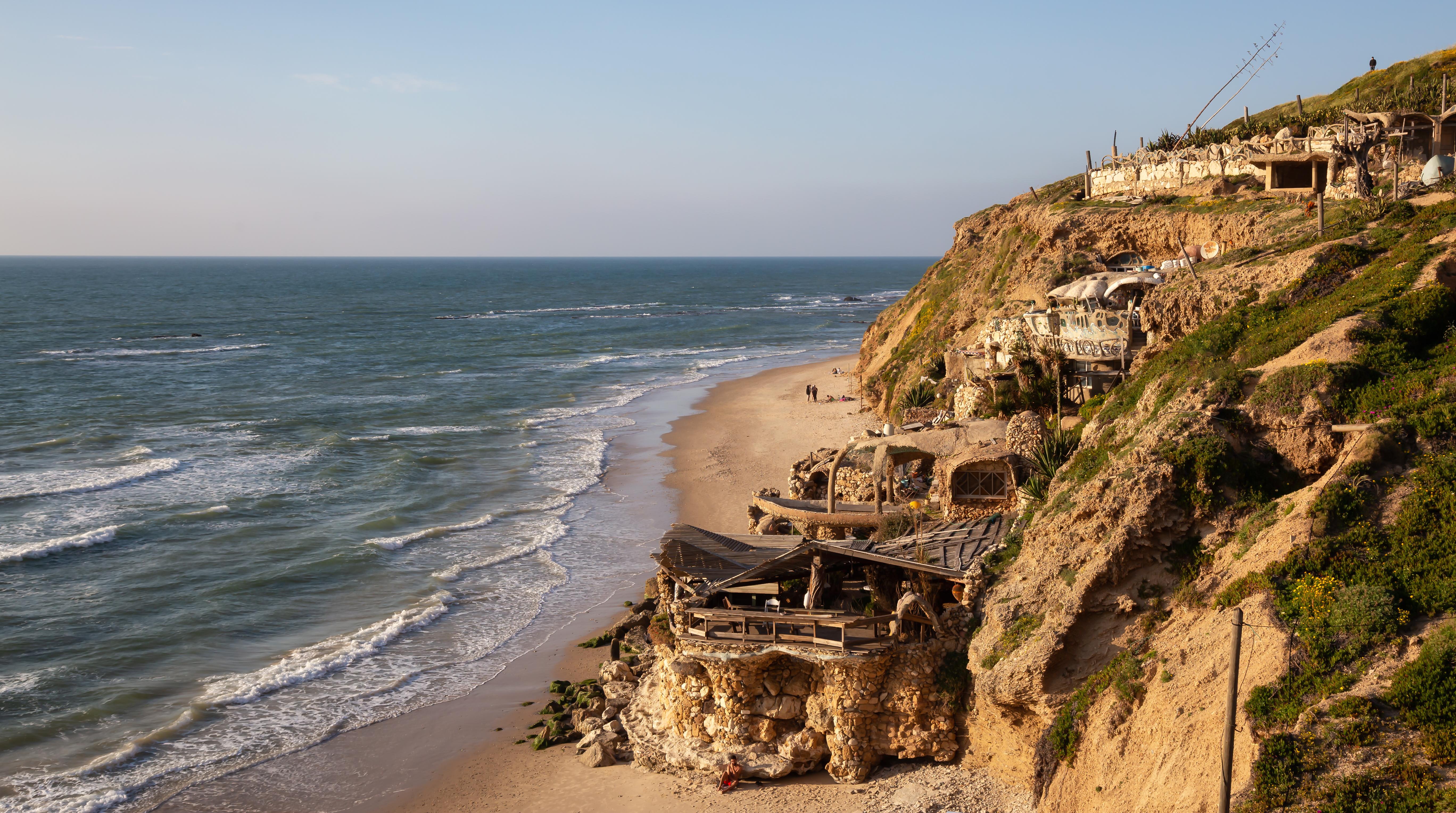
Nestled in the rolling hills of southwestern Albania, Apollonia offers a striking contrast to the well-trodden ruins of Greece and Italy. Founded in the 6th century BCE by Greek colonists, this once-thriving city became a vital cultural and economic hub in the Hellenistic and Roman periods. Its importance extended beyond trade; Apollonia was renowned for its philosophy school, attracting students from across the empire—including Octavian, the future Augustus. Today, the site features a remarkable theater, remains of a stoa, a triumphal arch, and a mosaic-rich nymphaeum. The ruins rest amid olive groves and quiet farmland, offering an immersive and peaceful journey through time. Lacking the crowds of more famous sites, Apollonia gives travelers the rare gift of solitude among ancient stones. As you wander through its timeworn streets, you’ll feel a powerful connection to a forgotten center of knowledge and culture.
21. Musawwarat es-Sufra, Sudan: The Elephants’ Temple
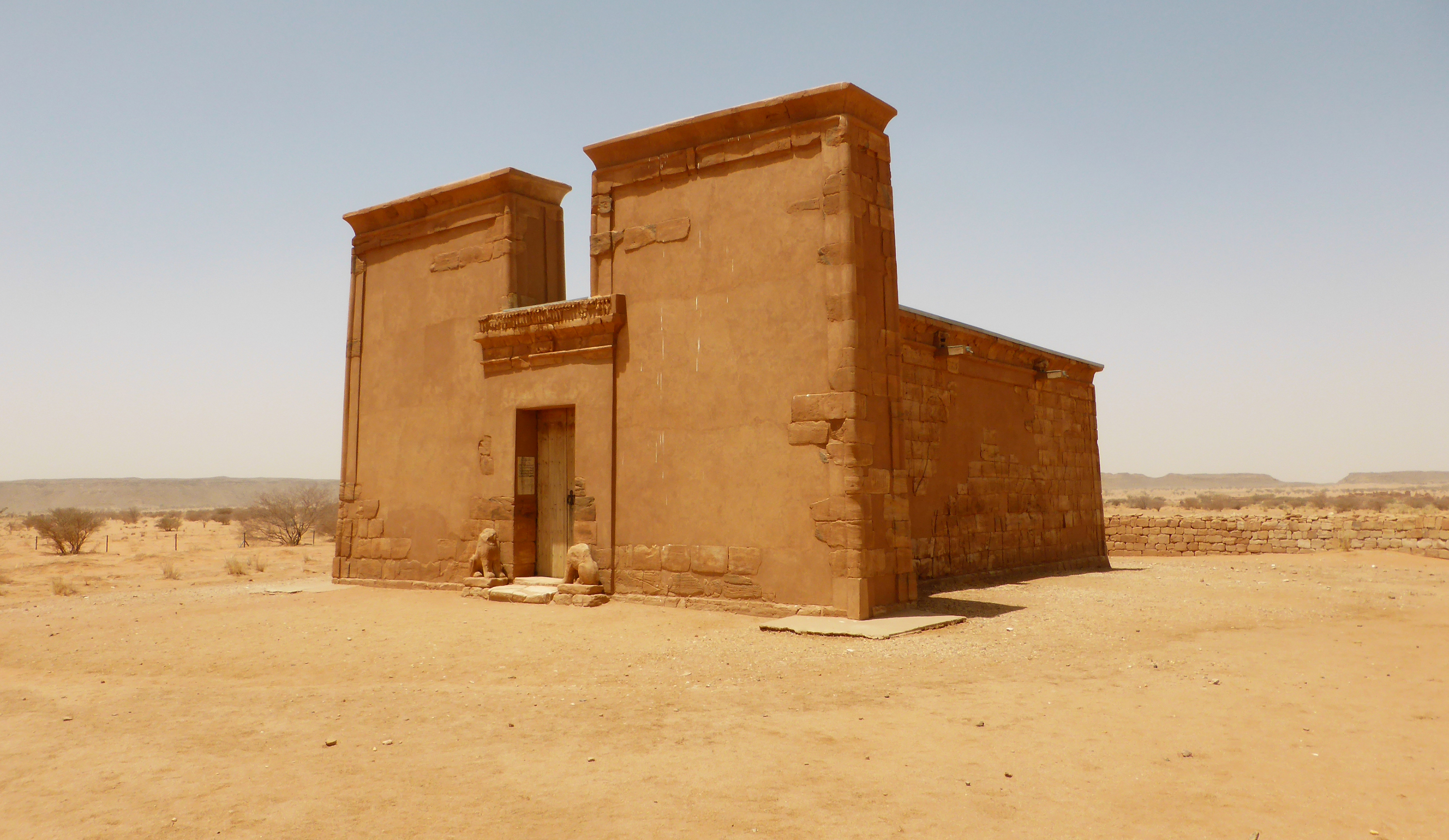
Far from the tourist circuits of northern Africa, Musawwarat es-Sufra emerges from Sudan’s desert like a mirage of ancient mystery. Part of the Meroitic Kingdom, which thrived from the 3rd century BCE to the 4th century CE, this sprawling complex is unlike anything else in the region. The Great Enclosure, its most iconic structure, features vast courtyards, winding corridors, and hundreds of reliefs—many depicting elephants, suggesting religious or ceremonial significance. Archaeologists believe it may have been a pilgrimage center or training ground for elephants, which held both symbolic and practical roles in the Kingdom of Kush. With its enigmatic purpose and elaborate carvings, Musawwarat es-Sufra invites exploration and imagination. It’s not just a ruin—it’s a puzzle, a spiritual site, and a monument to a civilization whose sophistication still surprises modern researchers. The effort it takes to reach this remote location only deepens the sense of awe when you arrive.
22. Rakhigarhi, India: The Forgotten Giant of the Indus Valley
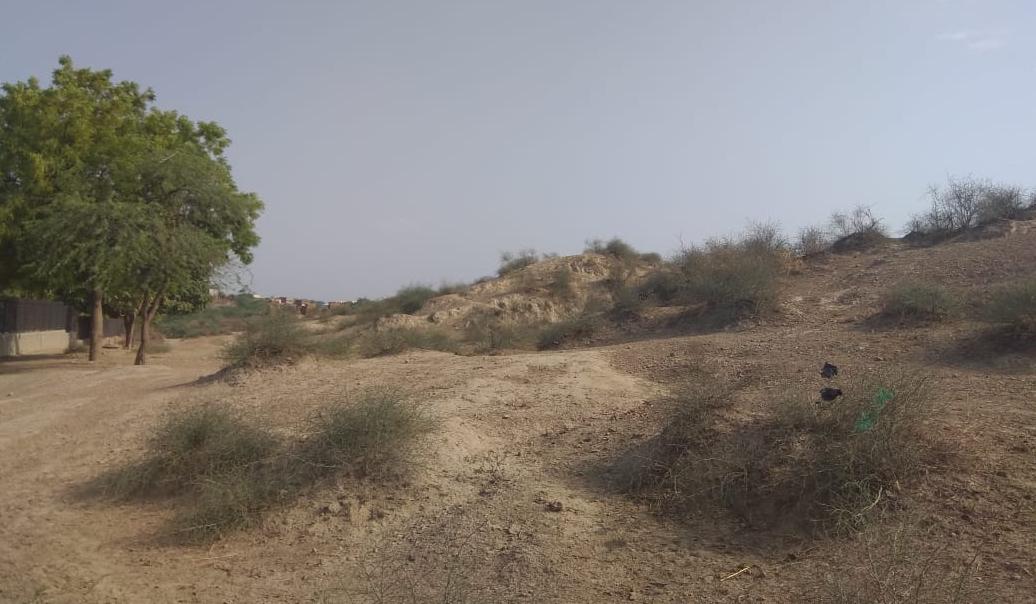
Often overshadowed by its better-known cousins, Mohenjo-daro and Harappa, Rakhigarhi is actually one of the largest sites of the Indus Valley Civilization—and perhaps the most revealing. Located in Haryana, India, this vast settlement thrived over 5,000 years ago and showcases the urban planning and social complexity of one of the world’s earliest civilizations. Archaeologists have uncovered wide streets laid in grid patterns, evidence of sewage and water systems, granaries, and well-crafted pottery. Recent discoveries, including burial sites and genetic material, have added new chapters to the understanding of South Asia's prehistoric past. Despite its size and significance, Rakhigarhi remains largely absent from popular discourse. For those who make the journey, it offers an unparalleled opportunity to stand at the birthplace of organized city life in the Indian subcontinent—and to witness history that is still in the process of being unearthed.
23. Monte Albán, Mexico: The Hilltop Capital of the Zapotecs
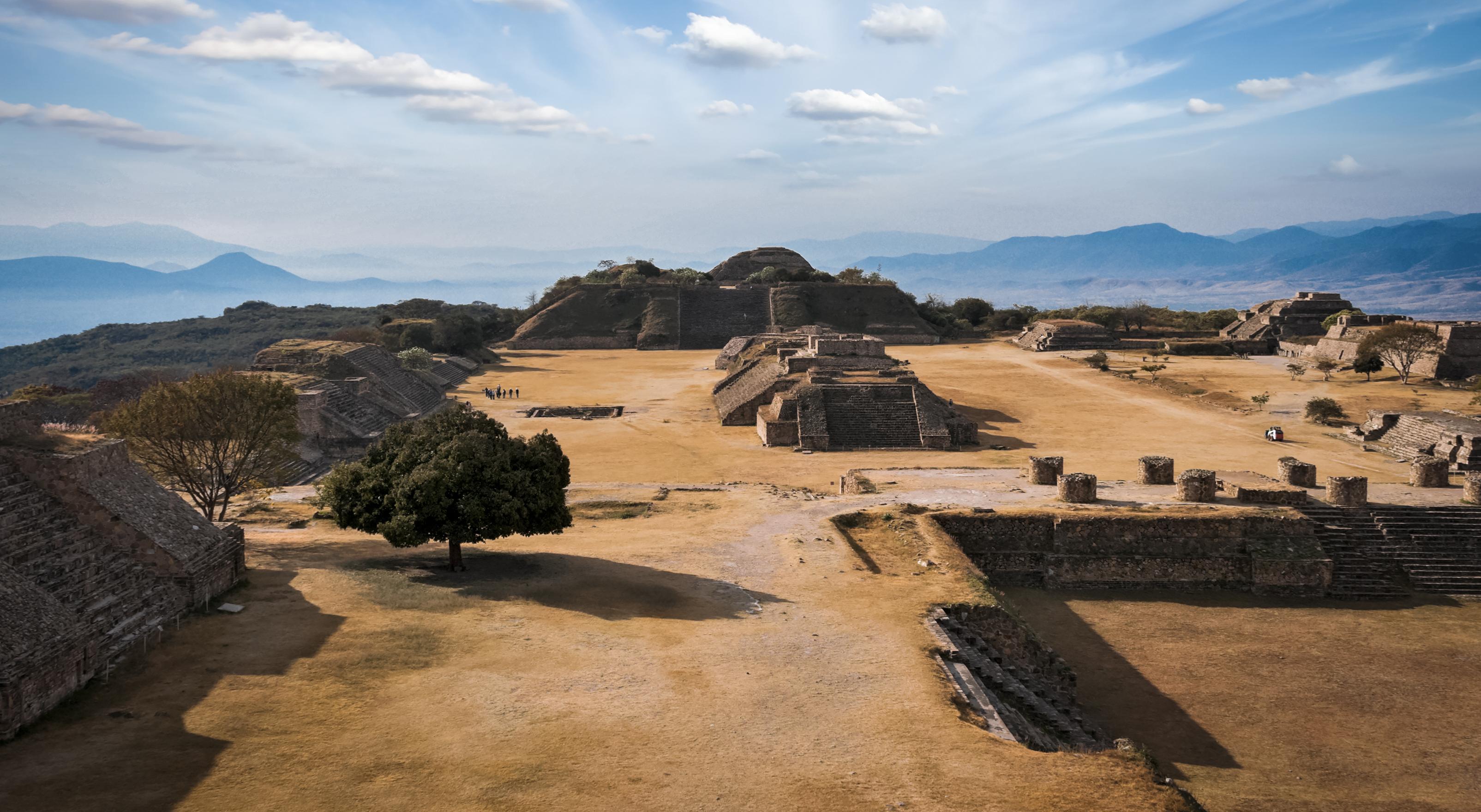
Towering above the Oaxaca Valley, Monte Albán is a stunning reminder of the Zapotec civilization’s ingenuity and influence. Occupied for over 1,300 years, from around 500 BCE to 800 CE, this hilltop city was more than a strategic stronghold—it was a thriving cultural, political, and astronomical center. Its wide plazas, ceremonial ball courts, and carved stone monuments (known as Danzantes) speak to a society deeply invested in ritual and governance. The observatory and temple alignments suggest advanced knowledge of celestial movements, placing Monte Albán among the great ancient sites of Mesoamerica. Despite its grandeur, it remains relatively off the beaten path, allowing for a tranquil and thoughtful exploration. From its terraces, you can gaze over the surrounding valleys and imagine the vibrant city that once ruled them. Monte Albán’s quiet majesty rewards those who seek a deeper connection to the region’s pre-Columbian heritage.
24. Leptis Magna, Libya: Rome’s Forgotten African Jewel
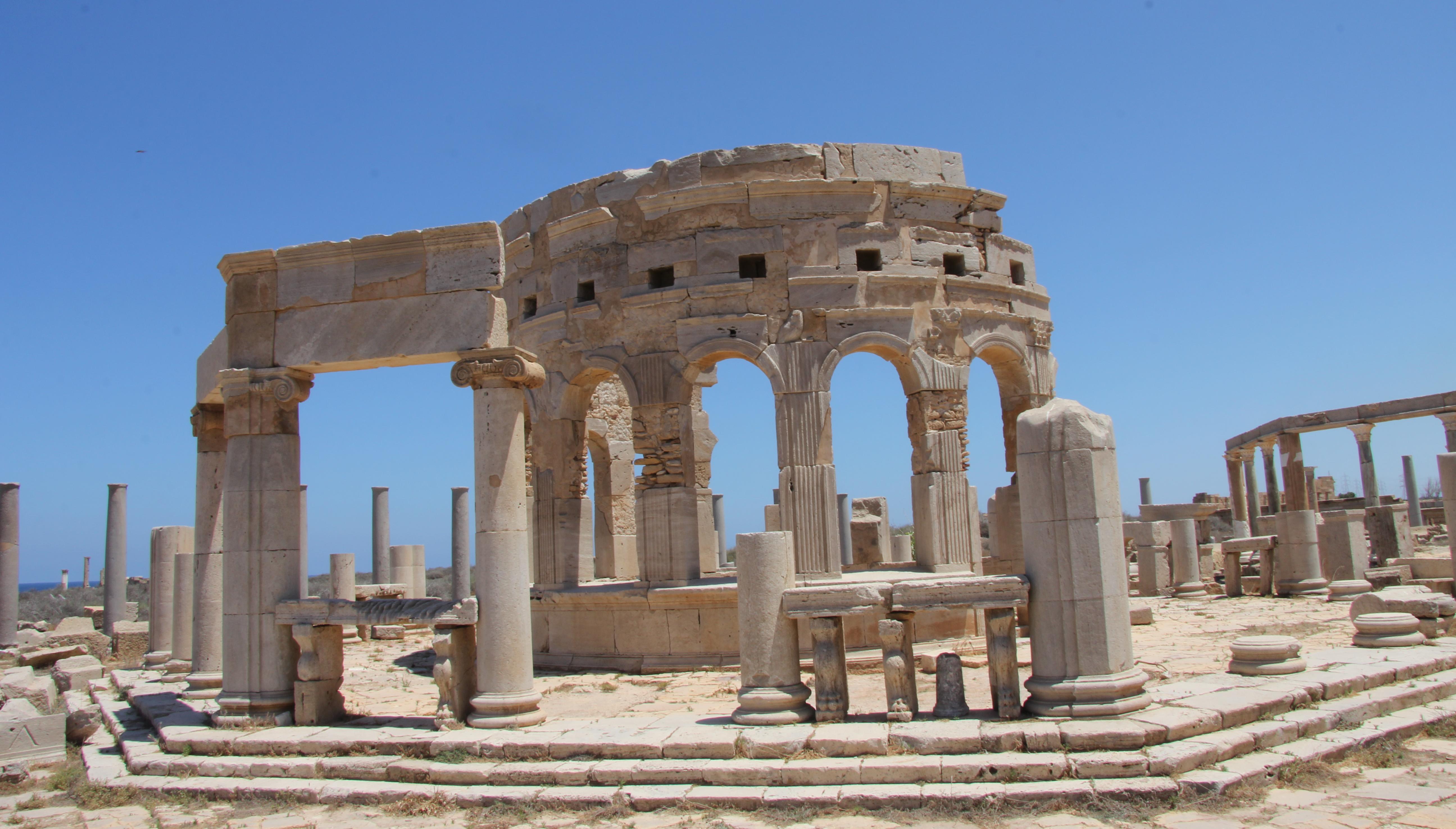
Once one of the crown jewels of the Roman Empire, Leptis Magna lies half-buried in the sands of Libya, astonishingly well-preserved yet eerily forgotten. Founded by the Phoenicians and flourishing under Roman rule, especially during the reign of Emperor Septimius Severus (a native of Leptis Magna), the city became a showcase of imperial wealth and urban sophistication. Its grand forum, basilica, market, and harbor facilities rivaled those in Rome itself. The massive amphitheater and intricately carved triumphal arch still stand in remarkably intact condition, echoing a time when this city was a bustling cosmopolitan hub. Due to political instability in the region, the site receives few visitors, making a trip here both challenging and deeply rewarding. Walking among the ruins, you’ll encounter not only the grandeur of Roman architecture but also the lesser-known story of Africa’s central role in ancient Mediterranean life.
Threads of Time Interwoven
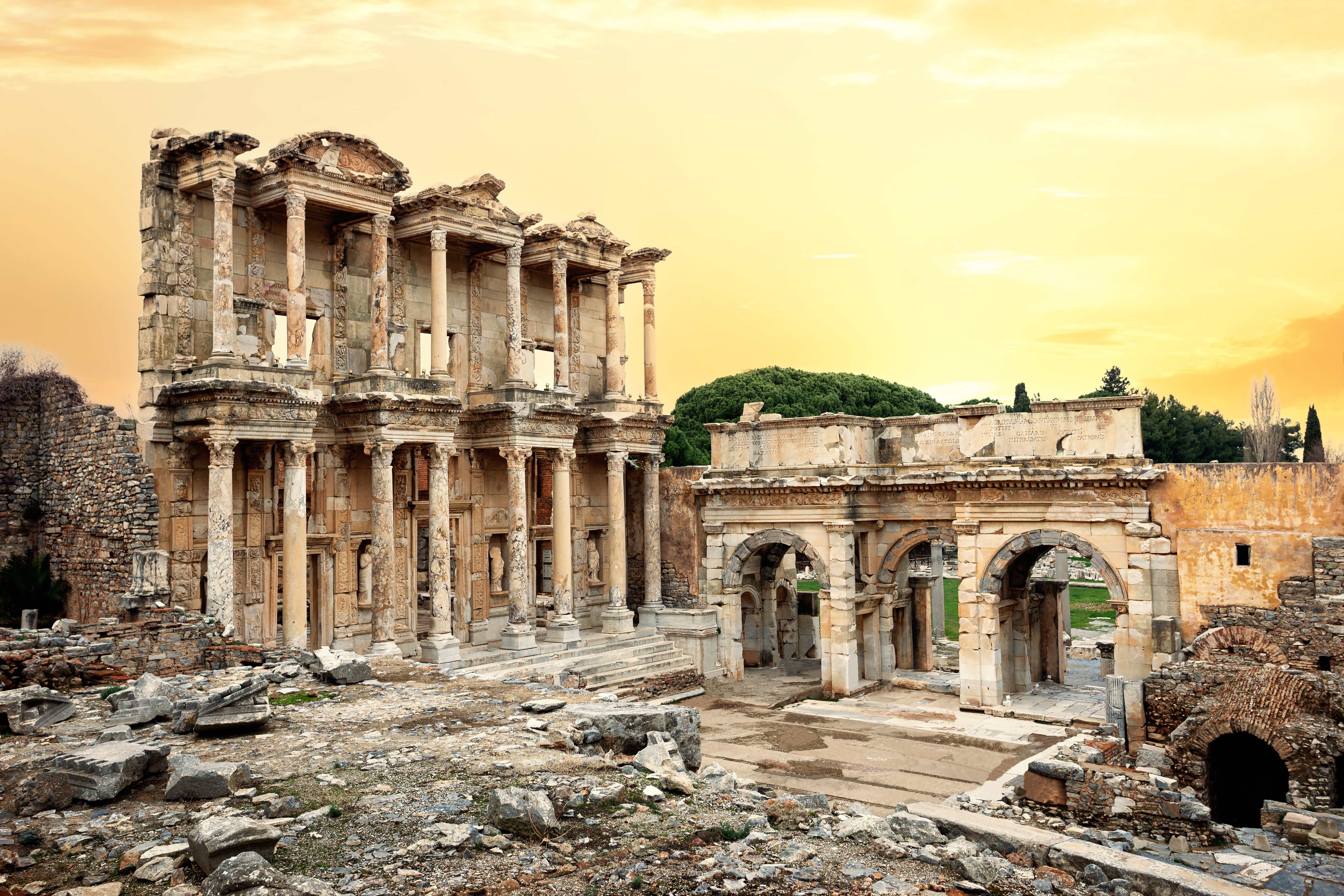
As we conclude our journey through these overlooked ancient ruins, we are reminded of the rich tapestry of human history that spans continents and millennia. Each site, with its unique story and cultural significance, offers a window into the past, inviting us to reflect on the achievements and legacies of our ancestors. These ruins, though often overshadowed by more famous counterparts, hold their own allure, challenging us to look beyond the surface and delve deeper into the mysteries of time. As we rediscover these forgotten paths, we are not only preserving their stories for future generations but also enriching our understanding of the diverse and interconnected world we inhabit. The tapestry of time continues to weave its intricate patterns, inviting us to explore, learn, and celebrate the wonders of our shared heritage.

